Hello hello!
I’m back again with another article about my current obsession: beading! So, remember those beaded spheres I’ve been making? I created an article not so long ago to let you guys know how to make one (and to keep a tutorial for myself as well for future reference, lol)
Anyway, I wasn’t just making them for fun (okay, maybe a little for fun)… I was actually working up to my first beaded animal! I’ve been willing to try it out for a while, after seeing many beaded animals all over my Pinterest feed.
But they mostly use RAW stitch, which I haven’t learned yet – so I had to improvise!
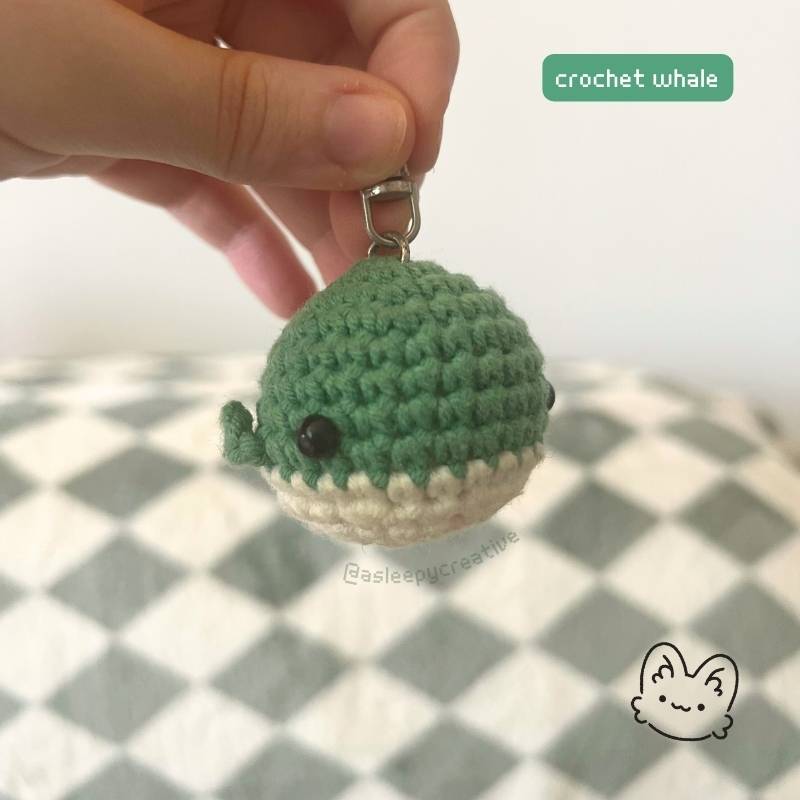
I’ve had this crochet whale for the longest time, and after learning how to craft a beaded sphere, I wanted to create the same chunky little whale. Round shape just like the beaded sphere, plus adding a couple of details, doesn’t seem too difficult, right? And it’s not! it just requires patience and attention to detail, I’d say.
To be honest if you can make a beaded ball following my previous tutorial, you can totally make this whale. It’s just a slightly different ball – less perfectly round, more whale-shaped with a flatter bottom; plus some cute little fins, a tail, and eyes.
This was my very first beaded animal, so if you’re also starting out, we’re in this together! Yes, there were some struggles (tension is still not easy to control, and attaching those fins without them looking wonky took some trial and error), but the end result? SO worth it.
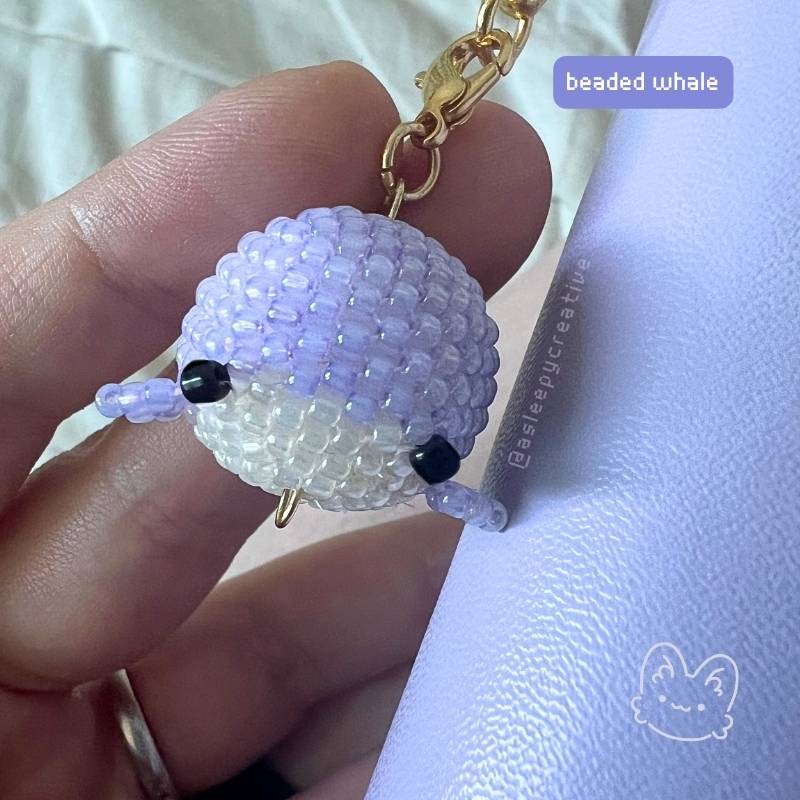
This is a difficulty level 2 project – meaning you should be comfortable with basic circular peyote stitch first. If you haven’t made a beaded ball yet, I’d recommend checking out my beaded ball tutorial before diving into this one. But if you’re ready? Let’s make a whale!
Materials
- 16mm bead (can be a little less, or a little more)
If you don’t have a bead of that size, you can make it yourself (like I did)! You can use clay, aluminimum, plastic wrap, or anything similar that will hold the shape. - Nylon thread (or similar) – max 0.2mm thickness
Whale’s body: 55 inches of thread (140cm)
Fins: 2x 11 inches thread (around 30cm)
Tail: 15 inches thread (around 40cm)
In my case, I used KO beading thread (330dtex) but you can use any as long as it is not too thick! I’ve also found this Aliexpress alternative. - 11/0 beads
For this project, I used toho 11/0 round seed beads (Amazon) / (Aliexpress). You can use any beads that are around 2mm.
I’m using 2 colors: purple, and off white. You can use the colors of your choice! - x2 3mm black beads (for the eyes)
but you can also choose smaller ones (2mm)! - Beading needle
I personally use a 11/0 beading needle for most of my beading work, but if you don’t have any, I recommend buying a pack with sizes 10, 11 and 12. 🙂
About the Pattern
Make sure you take note of these points before starting to work on your whale! It’s important for the understanding, as well as the success of the project.
Through the whole work:
- Maker sure you know about the basics of peyote stitch! If you don’t know anything about it, the pattern might be harder to follow.
- Always end by passing through the first bead added in the round you’re working on.
- If you get confused, trying orienting your work the same way I do on the pictures / diagrams. You’re free to rotate your work as much as needed!
On the diagrams:
- Grey beads = Beads added during the previous round
- Purple beads = beads added during the round.
- Light purple beads = beads already threaded and done for
On the pictures:
- Pink border on beads = beads added during the current round
- Pink strokes = skip (decrease)
Now let’s finally start crafting a cute little beaded whale!
Beaded Whale Tutorial Step by Step
1. The Body
For the body, you’ll need your longest thread (55 inches), as well as your 11/0 beads (or 2mm) in both colors chosen, and your beading needle.
Row 1
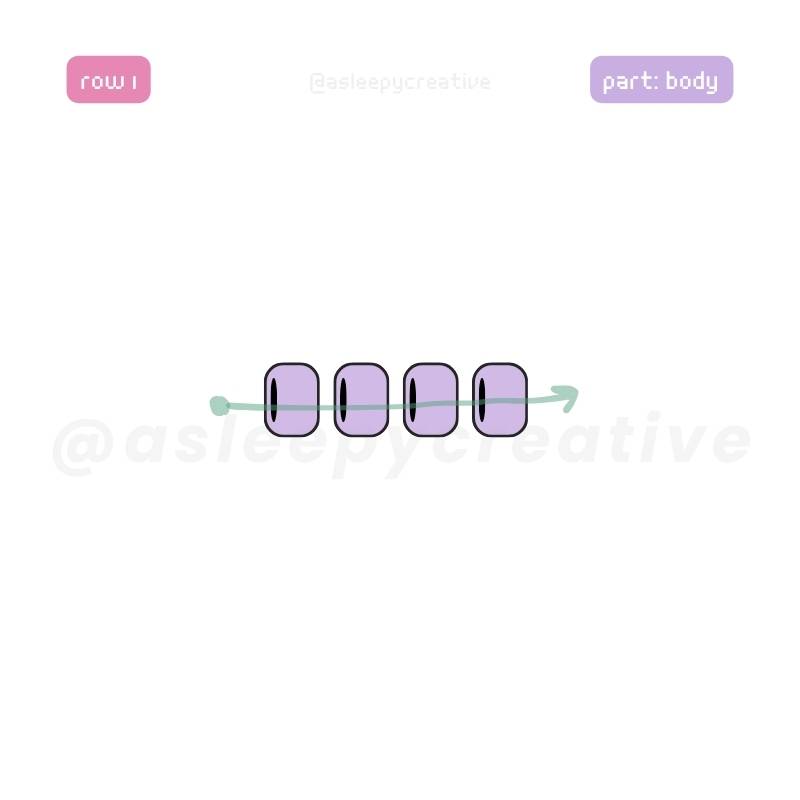
To start buildinging your whale’s foundation, pick up 4 beads and thread them on your needle
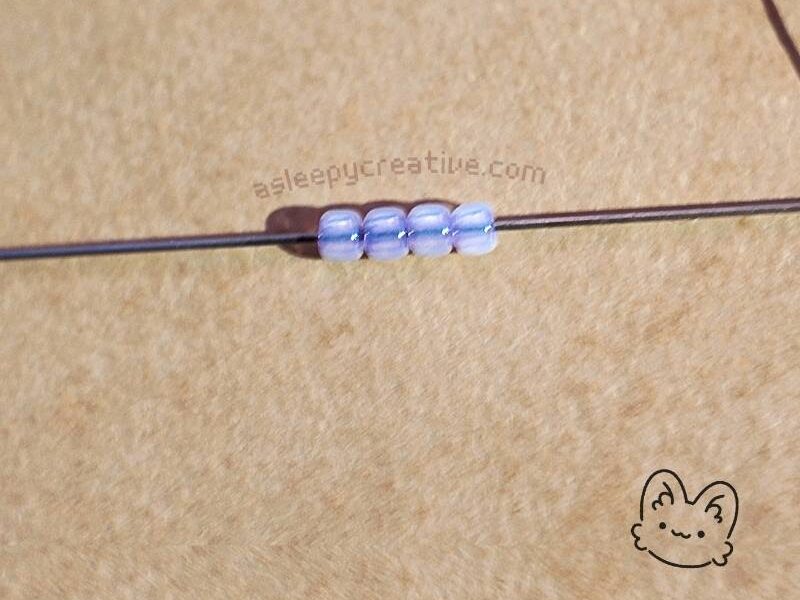
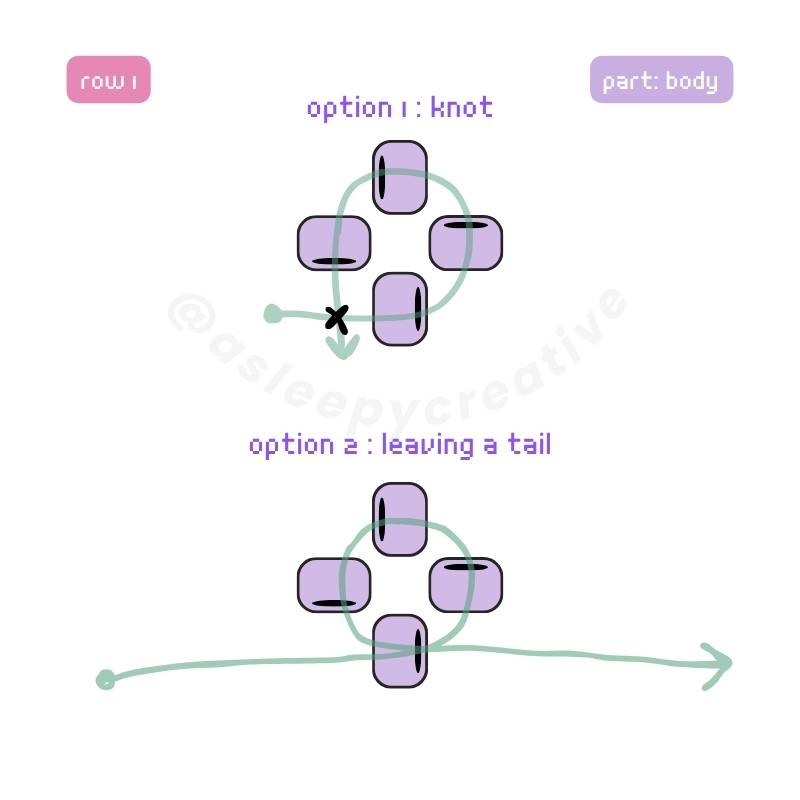
From here, you have two choices: either you tie a knot (a surgeon’s knot is very secure and will go a long way), or you leave a tail (the tail should be long enough to be weaved in the final work at the end).
There are pros and cons for both methods. Leaving a tail means you’ll always have the tail bothering you until the end of the work. Leaving the tail to be weaved at the end will be seamless though, while the knot will always be a bit visible.
I chose the knot, but it’s up to you!
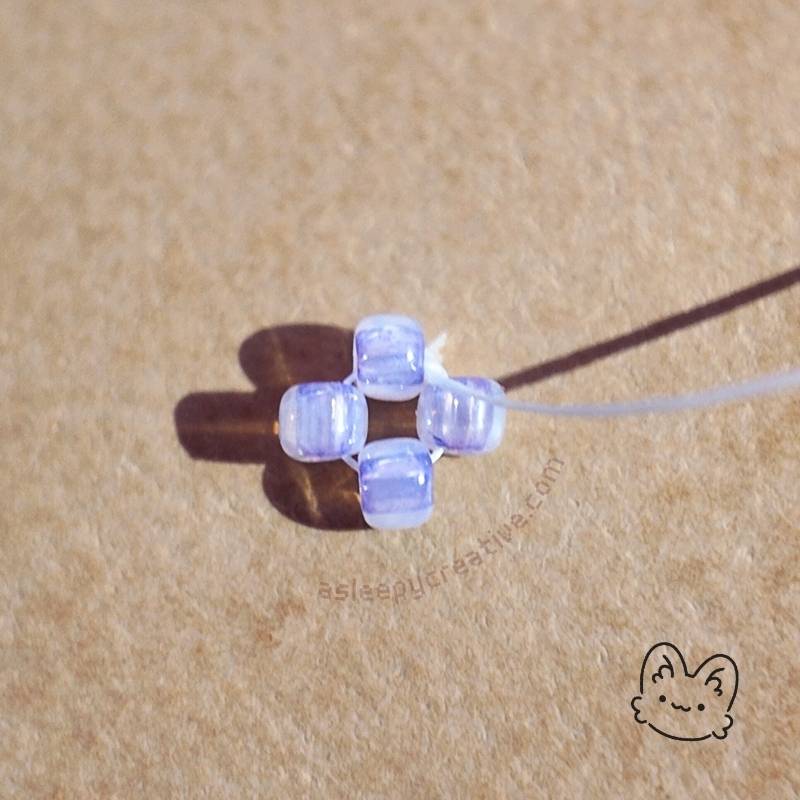
The foundation with the knot, ready to thread more beads!
Row 2
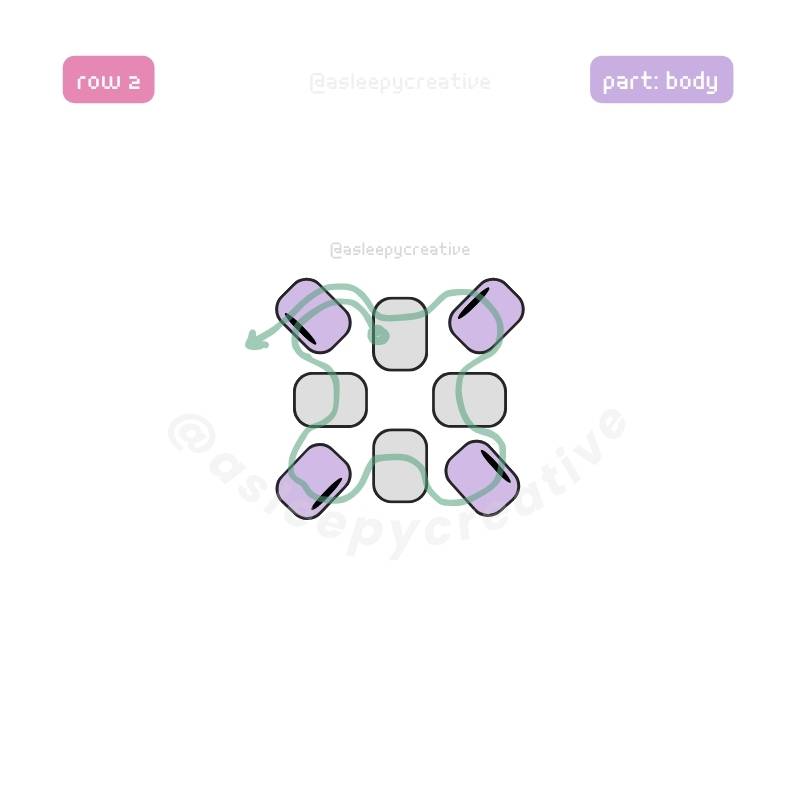
For row 2, we need 4 additional beads. We thread them in between each bead of the previous row (basics of peyote stitch that we will use through out the whole project!)
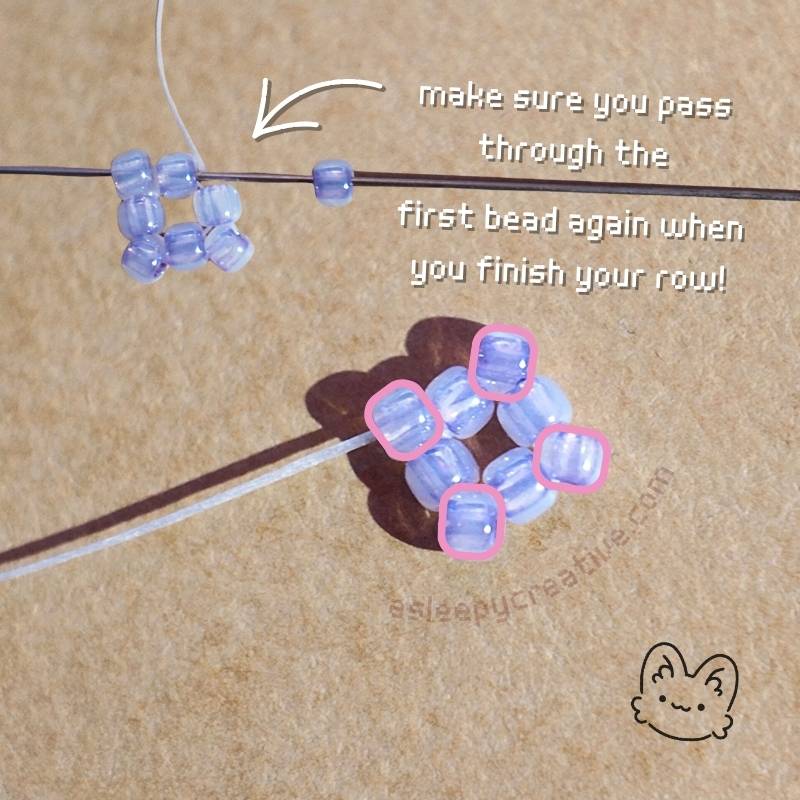
And of course, don’t forget to pass through the first bead added during the row at last. You’ll have to do that during the whole work as precised previously, but I won’t keep repeating it, so make sure it becomes a habit.
Row 3
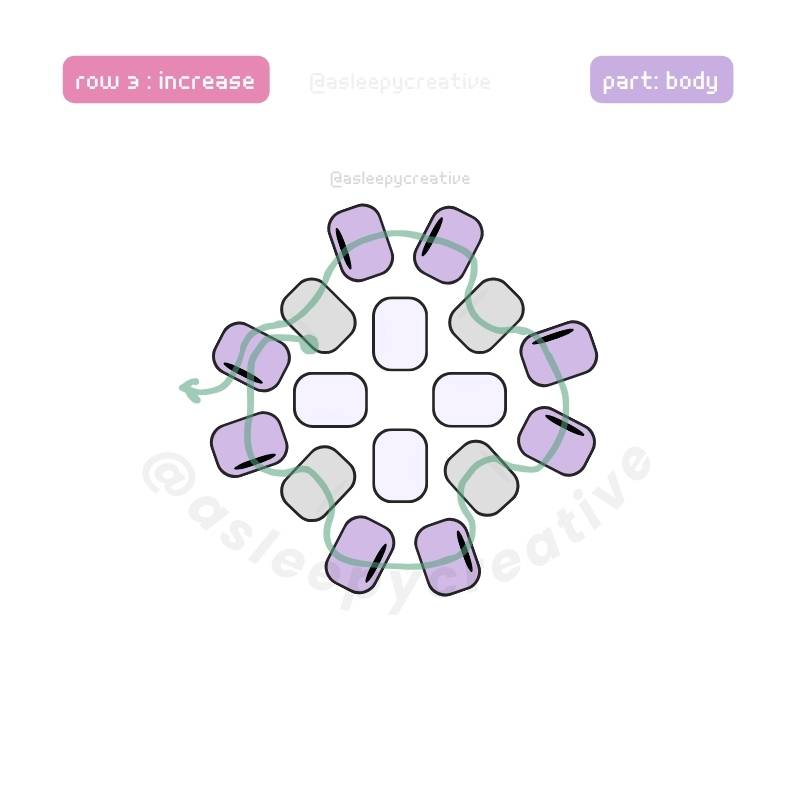
Row 3 is our first increase. We go from 4 beads to 8 beads. Instead of threading one bead between each bead of the previous row, add 2. (pattern: 2 – 2 – 2 – 2)
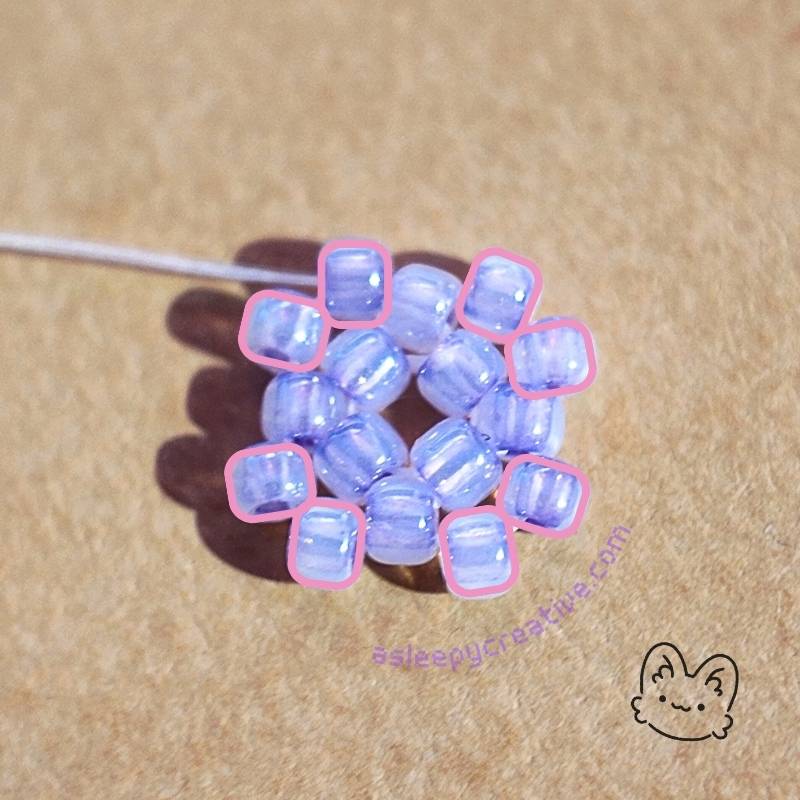
Row 4
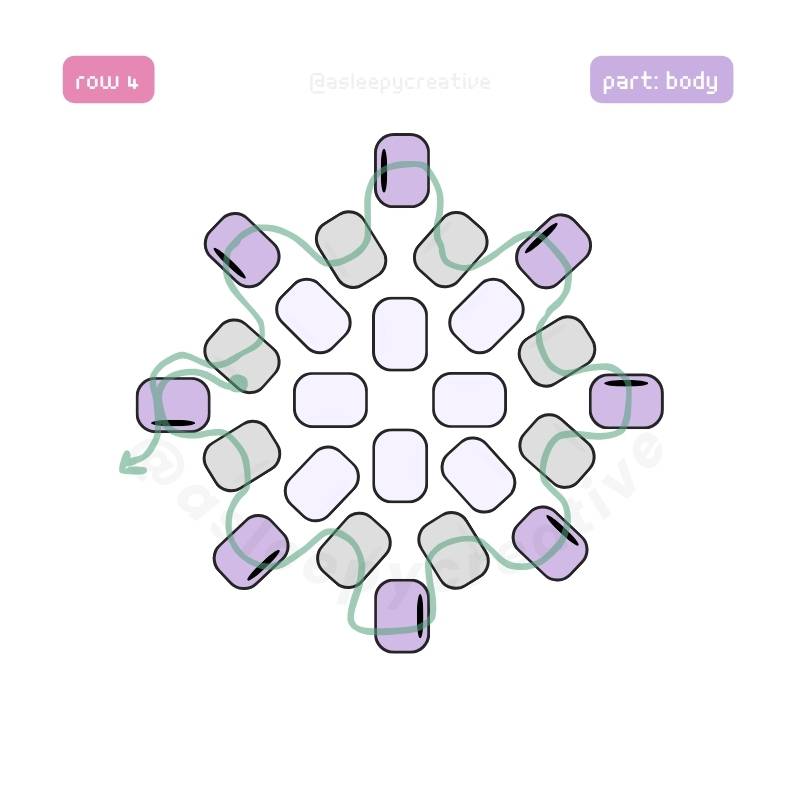
Okay, row 4! This is a regular peyote round with no increases or decreases. Simply add one bead between each bead from the previous row, working your way around the entire circumference. You’ll need 8 beads! (pattern: 1 – 1 – 1 – 1 – 1 – 1 – 1 – 1)
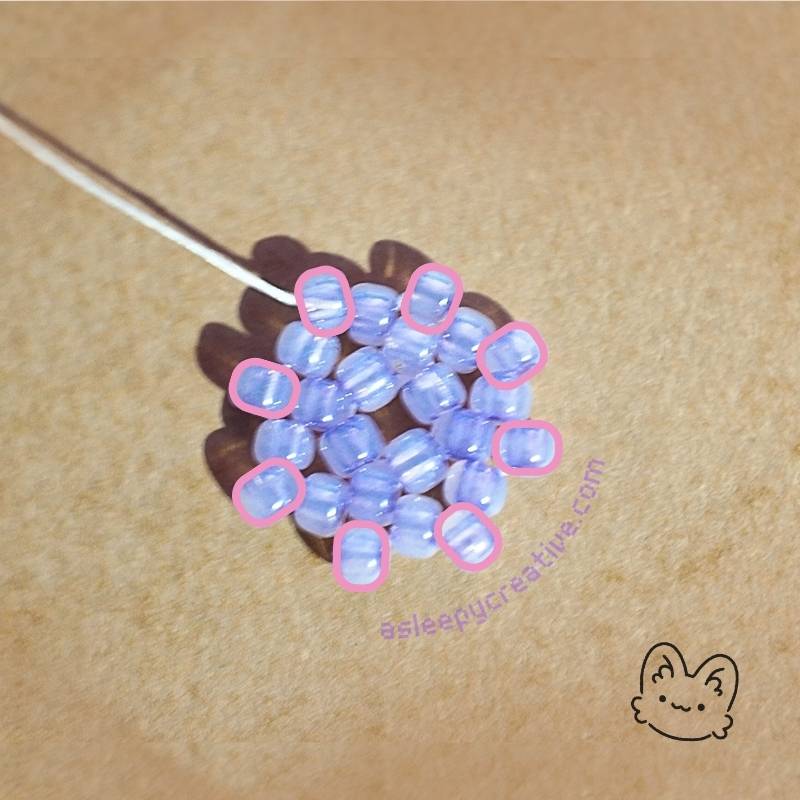
Row 5
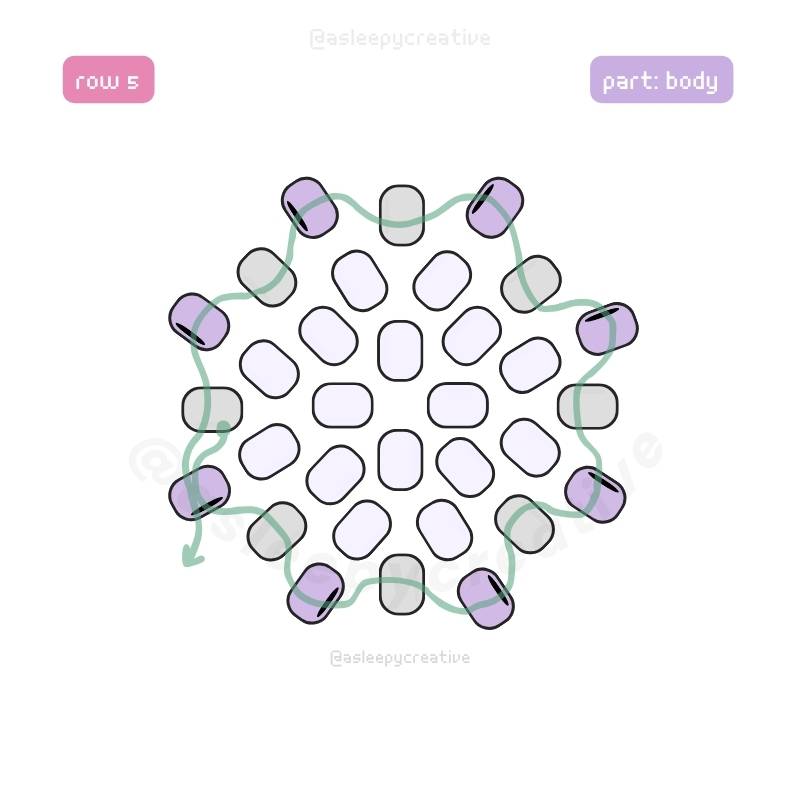
Work row 5 using the same pattern as row 4, with 8 beads. Pick up one bead, pass through the bead of the previous row, pick up one, pass through, pick up one, pass through… you get the rhythm! (pattern: 1 – 1 – 1 – 1 – 1 – 1 – 1 – 1)
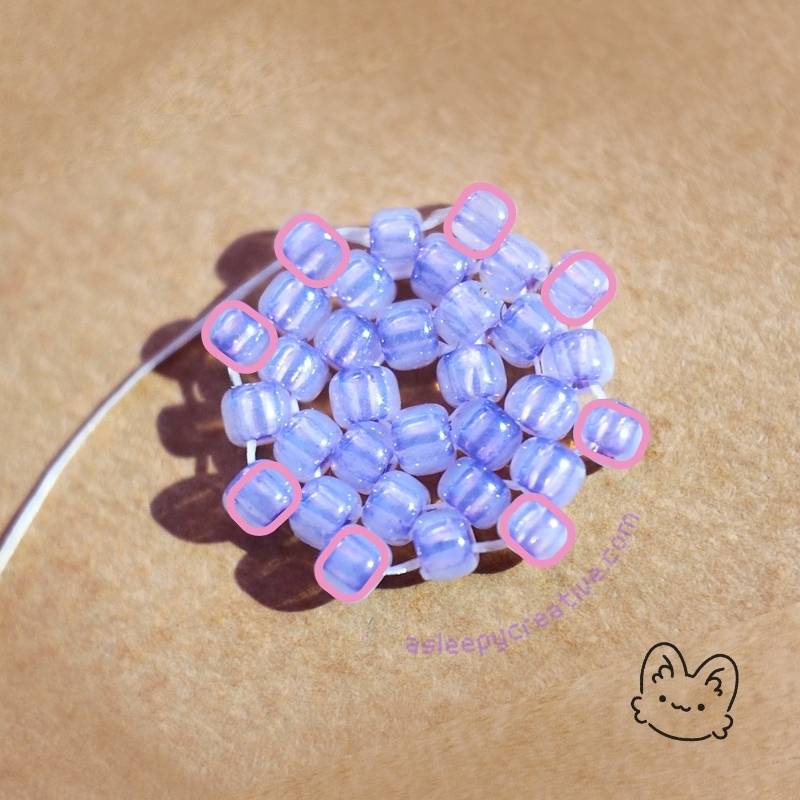
Row 6
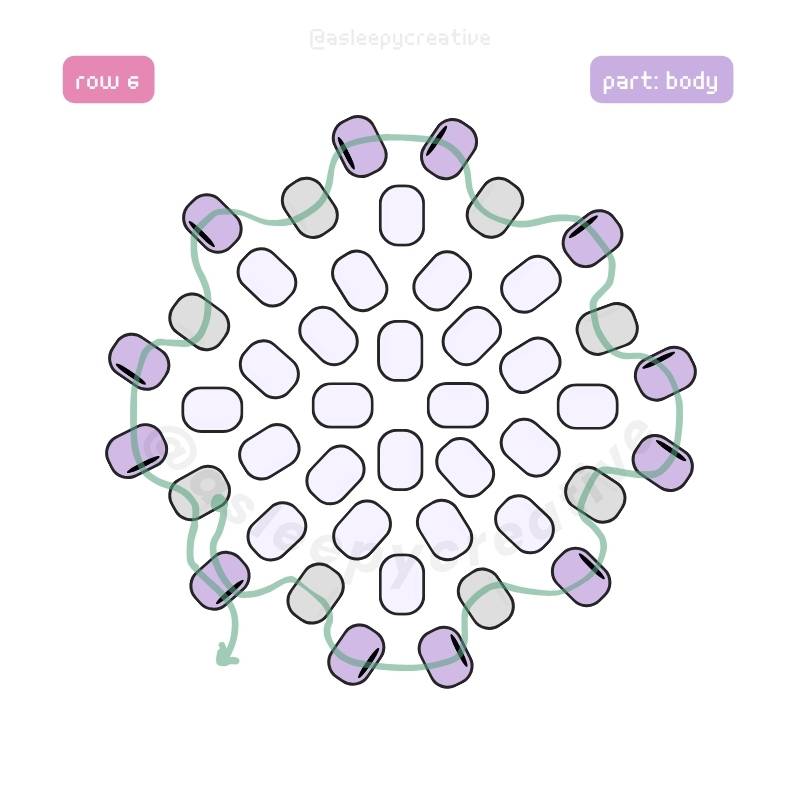
Time to make this sphere grow! This round has increases, but not for every spot! The pattern goes 1 – 2 – 1 – 2 – 1 – 2 – 1 – 2 – 1 – 2 – 1 – 2. Identify where the previous increase is, and increase on top of it. Keep going around until you’ve worked all positions. You’ll end up with 12 beads total.
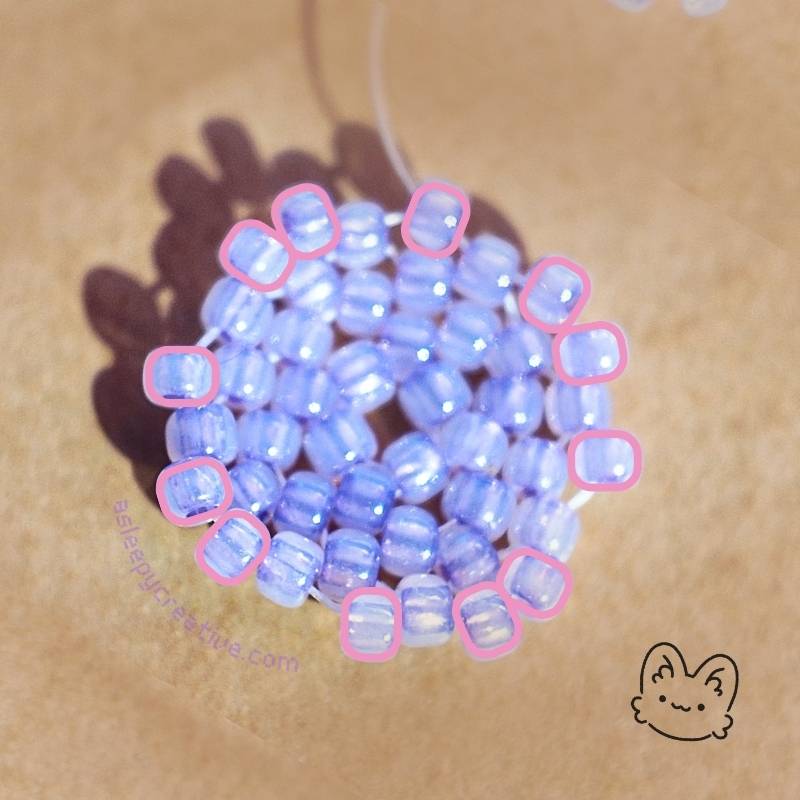
Row 7
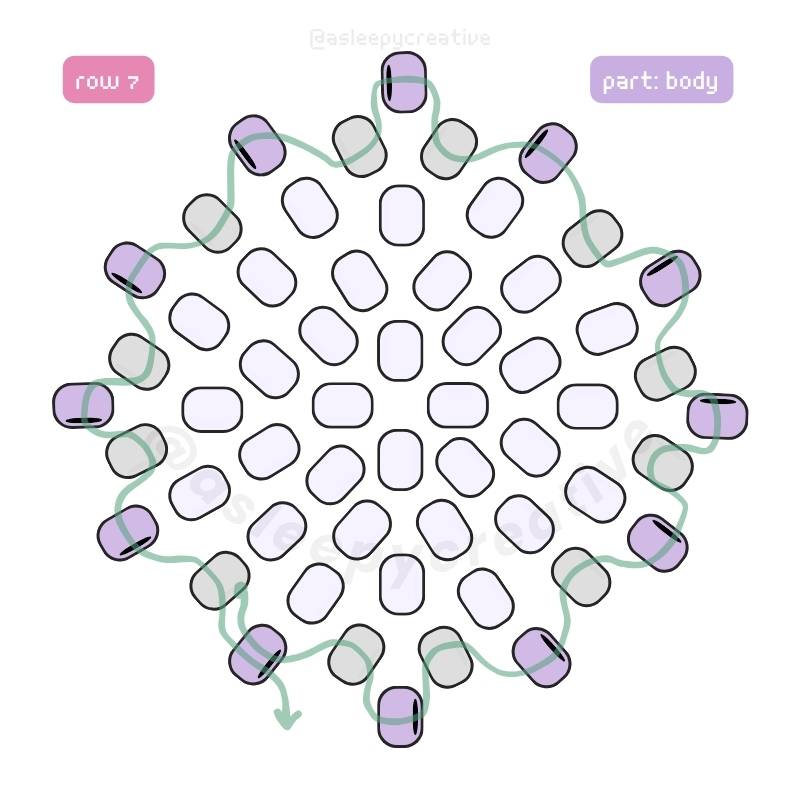
Row 7: all single bead across this row! Just work normal peyote stitch, adding a single bead between each bead from the previous round, counting a total of 12 beads
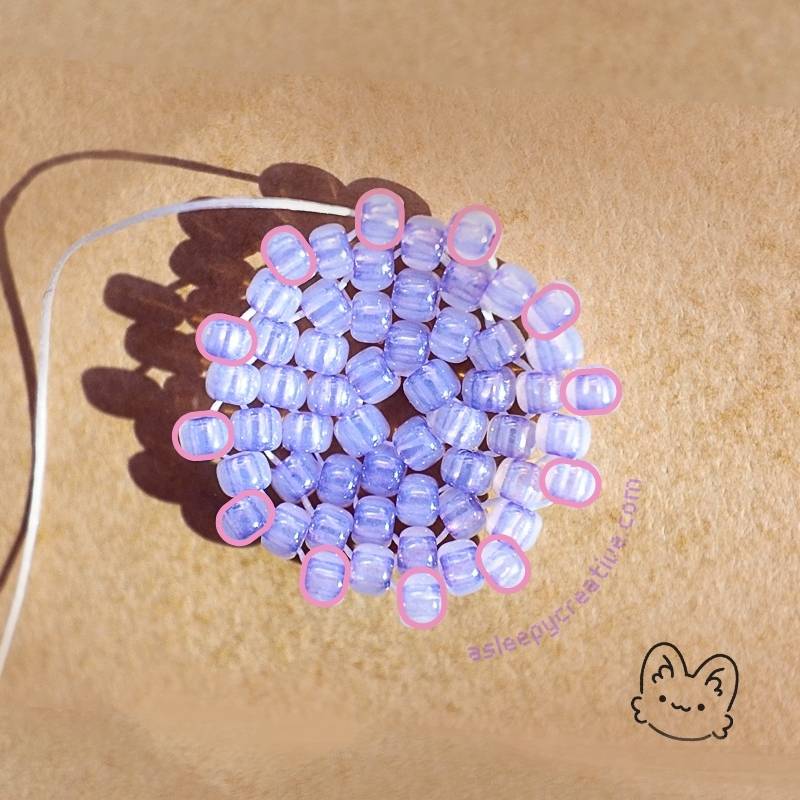
Row 8
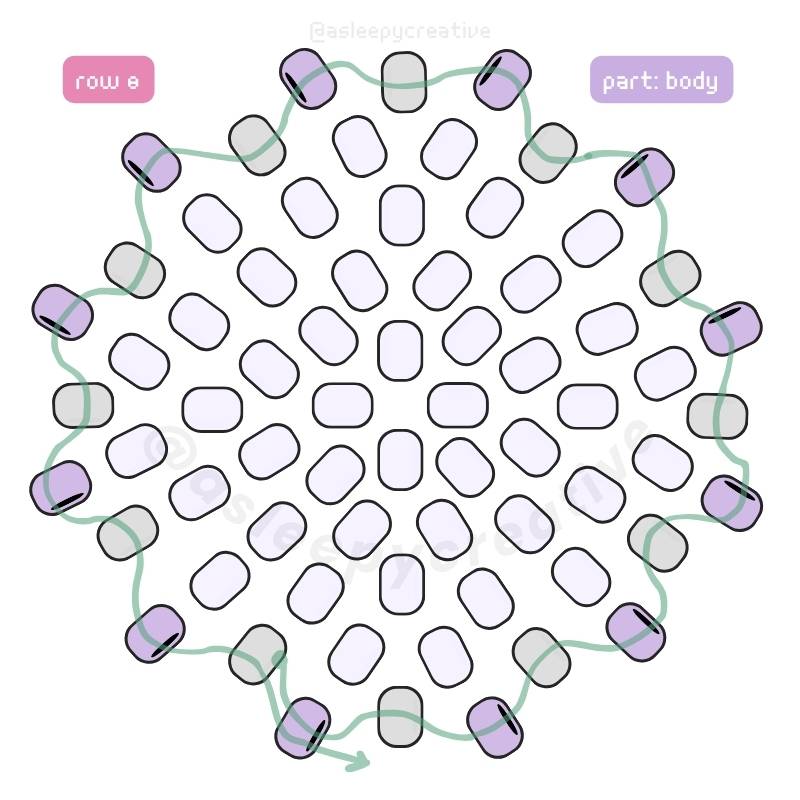
Another round just like the last one (row 7) with 12 beads to add. You’ve got this rhythm down now! Work through all positions using the same pattern.
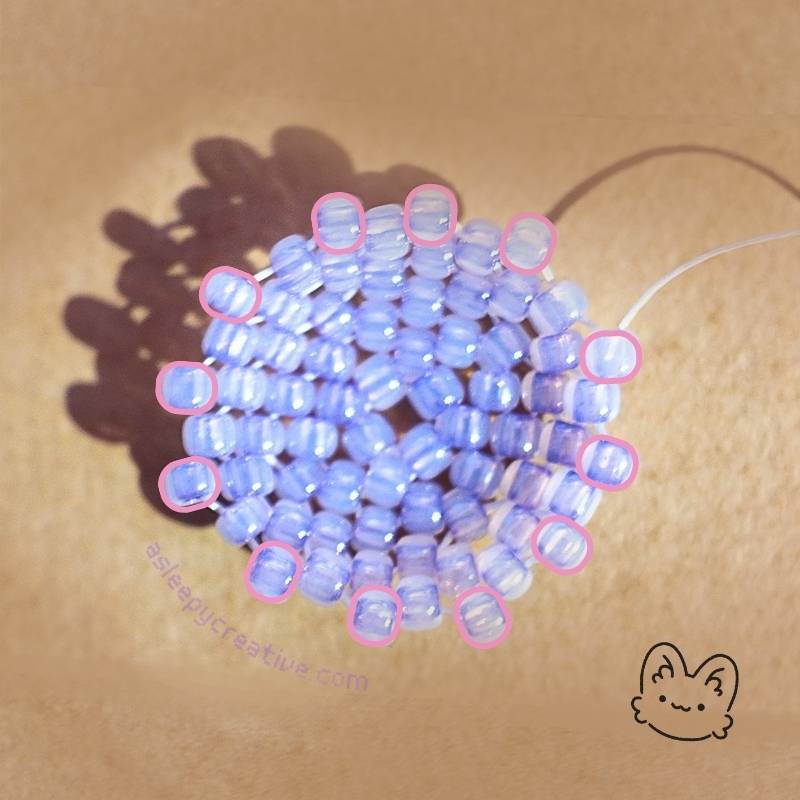
Row 9
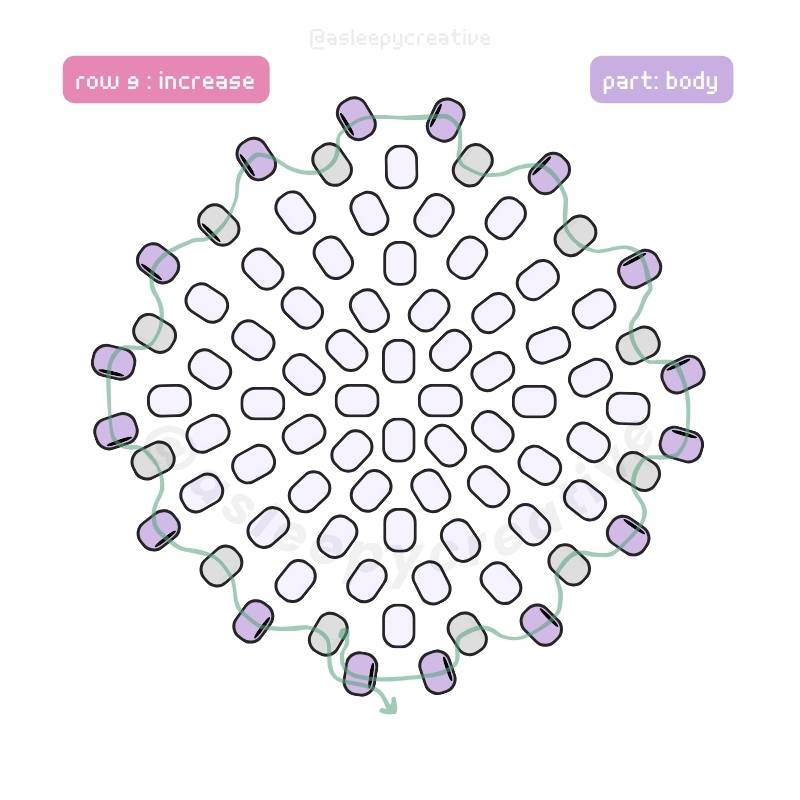
Row 9, the last increase for our little whale! You’ll need to alternate adding 2 beads and 1 bead in each position, as previously. Add 2 beads, then 1 bead, then 1 bead, then 2 again, and repeat this pattern until you have 16 beads. (pattern: 2 – 1 – 1 – 2 – 1 – 1 – 2 – 1 – 1 – 2 – 1 – 1 – 2 – 1 – 1 – 2 – 1 – 1 – )
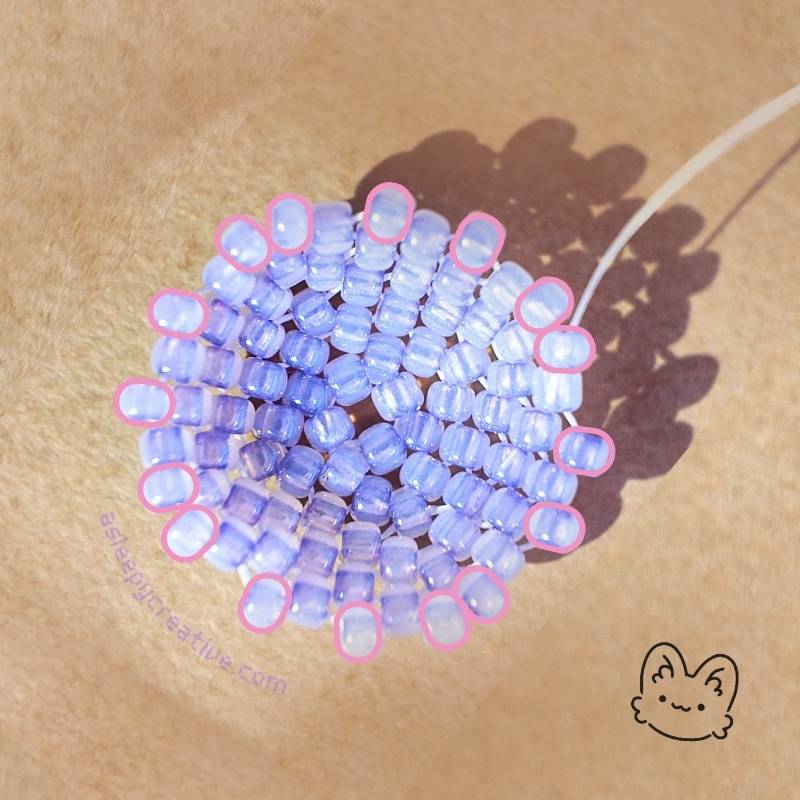
Row 10
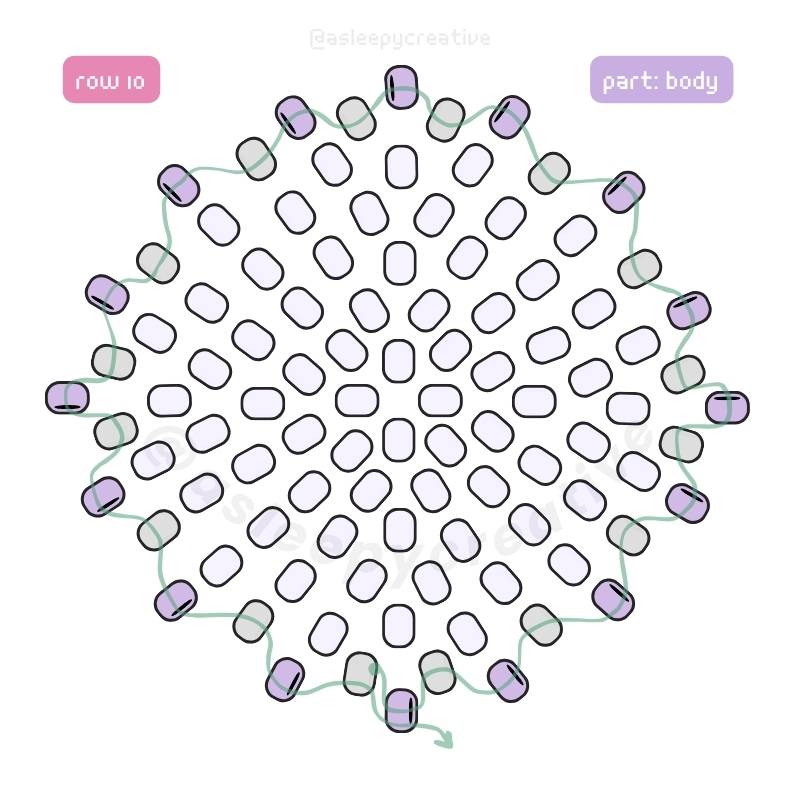
Once again and after all increases, we work our regular peyote stitch by adding one bead in between each bead of the previous row for a total of 16 beads! ♥
You’ll have to work this way without any change to the pattern for the next 8 row (total 9 rows of 16 beads). Make sure you keep count of your rows! But just in case you lose count, here is how to count them:
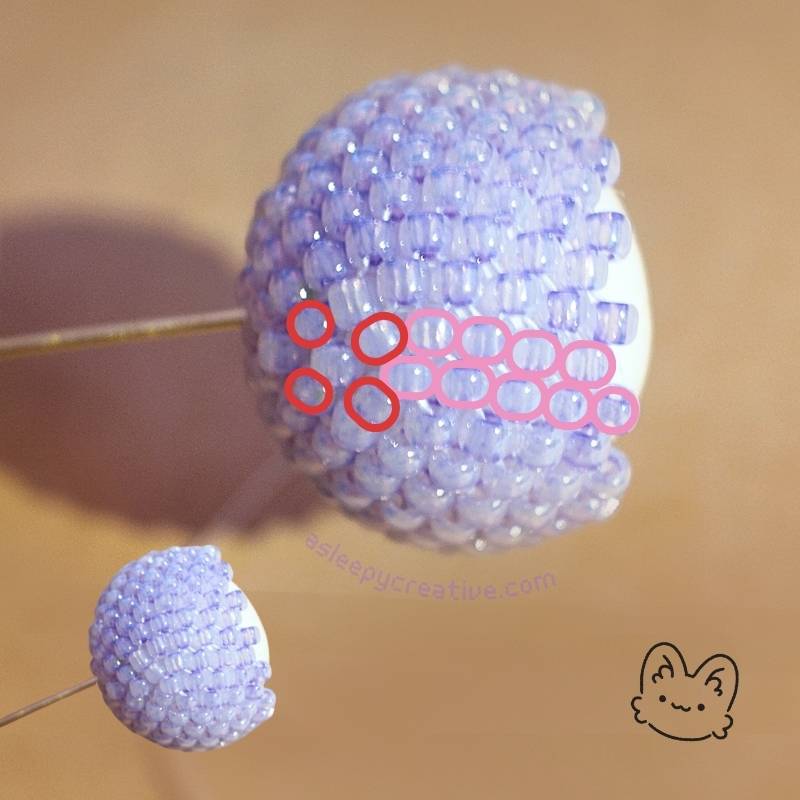
The red circles represent the last two increases we’ve made. Each pink circle represents one row. By counting this way, you can identify which row you’re at if you’ve lost your count. 🙂
Row 19
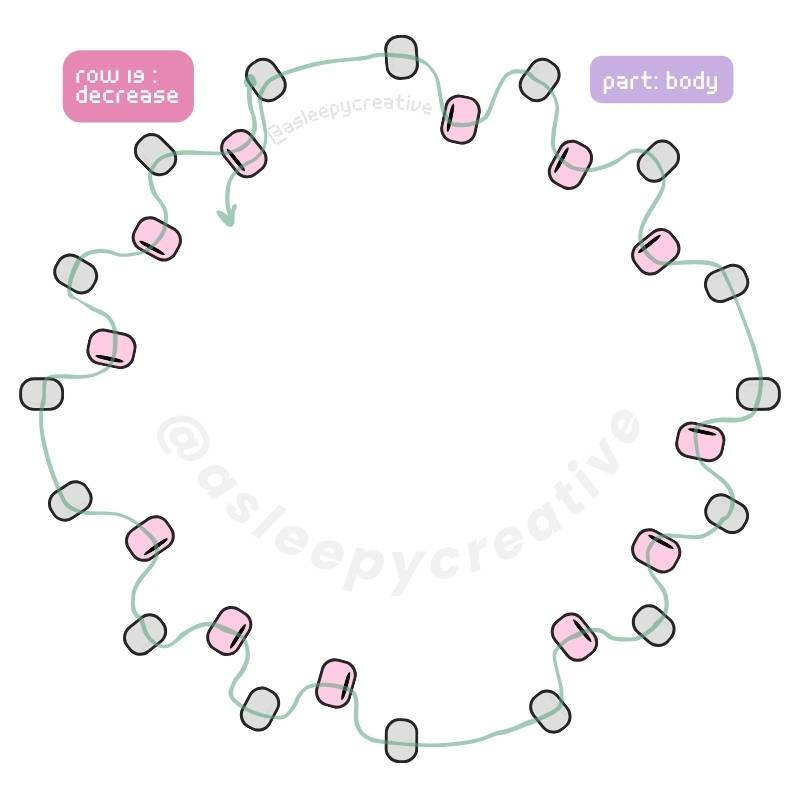
Now that we’re done threading through all our 16 beads rows, we end up at row 19, and it’s time for our first decrease! Work this decrease round by following the pattern: 1 – 1 – 1 _ 1 – 1 – 1 _ 1 – 1 – 1 _ 1 – 1 – 1 _. Where you see ‘1’, add one bead as normal. Where you see ‘_’, skip that position by passing directly through without adding anything. You’ll end up with 12 beads and a successful decrease!
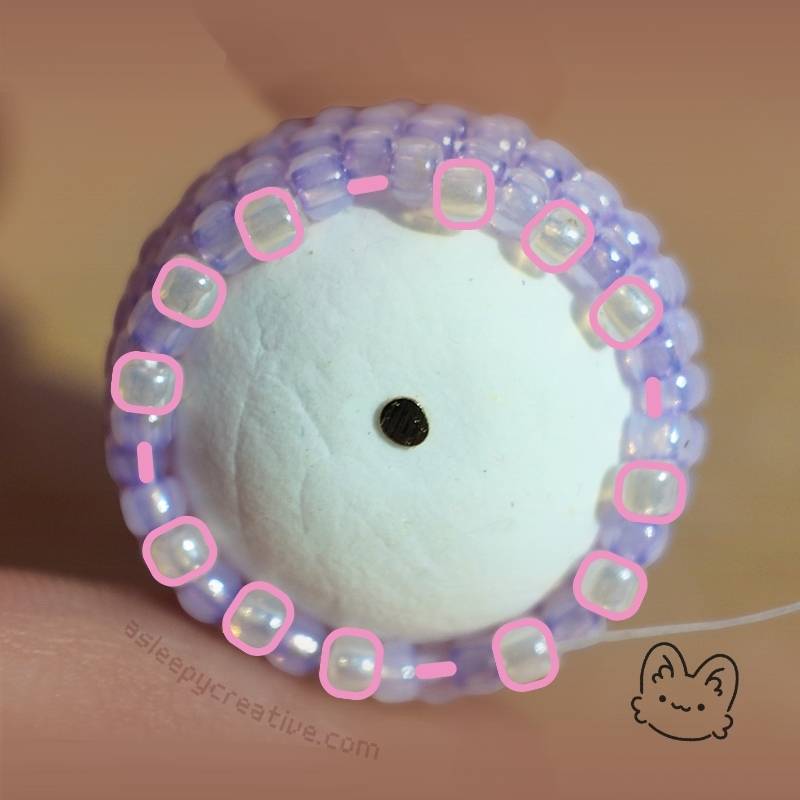
- Again and as always, don’t forget to end by passing through the first bead you added during the row!
- This decrease can not be stacked on top of the previous increases because of the odd number of rows. Just decrease where you see fit!
Row 20
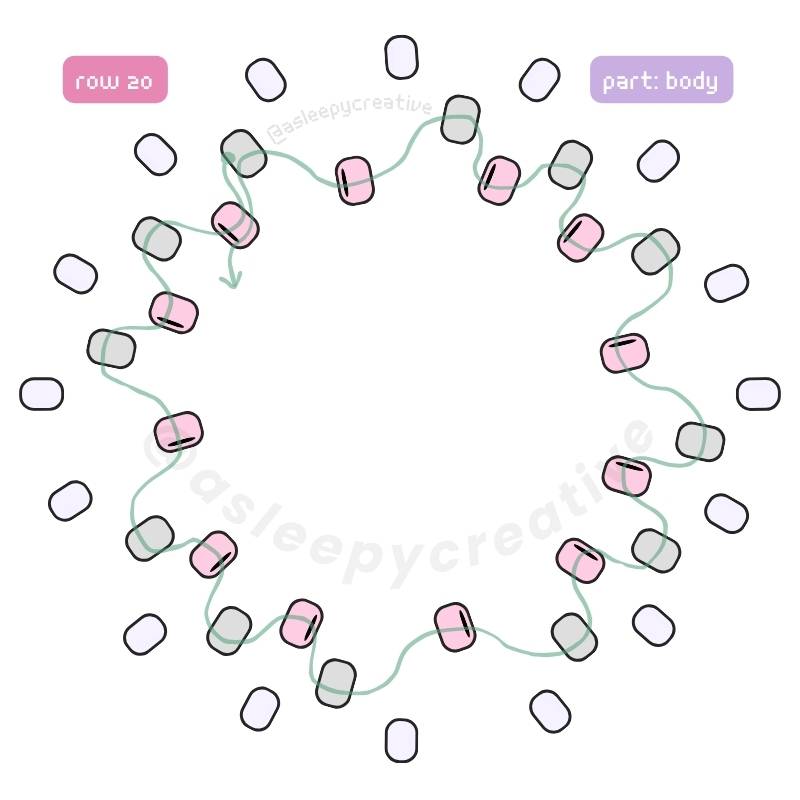
Row 20 is a regular row. Work one complete round of regular peyote. Add one bead between each bead from the previous round, working all the way around.

Row 21
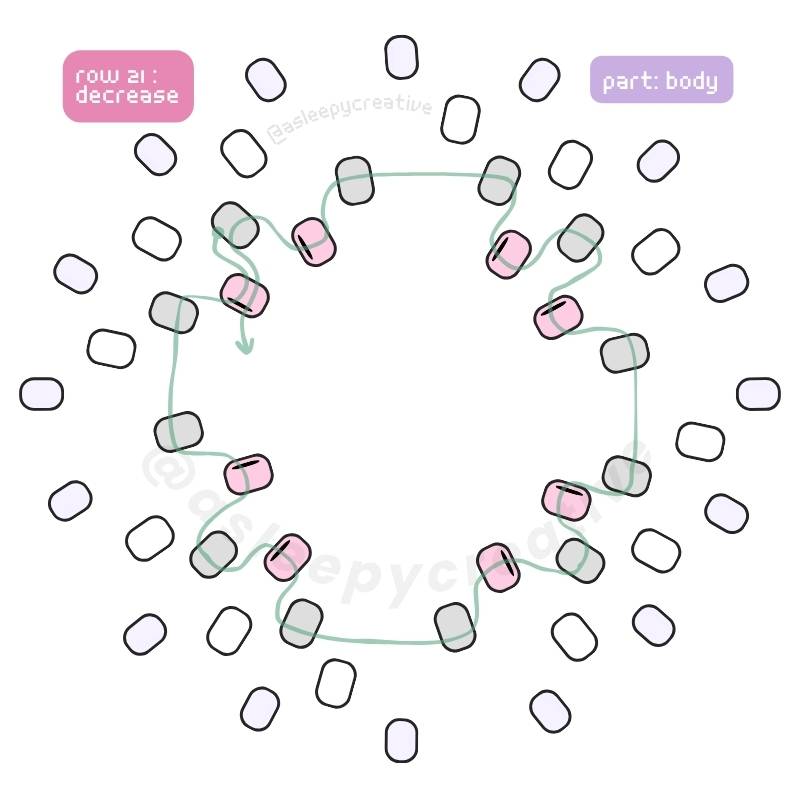
And it’s time for the second decrease! As you can see, we only have one row of regular stitches between decreases. It allows us to create a less round shape for the bottom of the whale.
Anyway, the pattern for this decrease is: 1 – 1 _ 1 – 1 _ 1 – 1 _ 1 – 1 _. You’ll end up with 8 beads and 4 skipped positions!
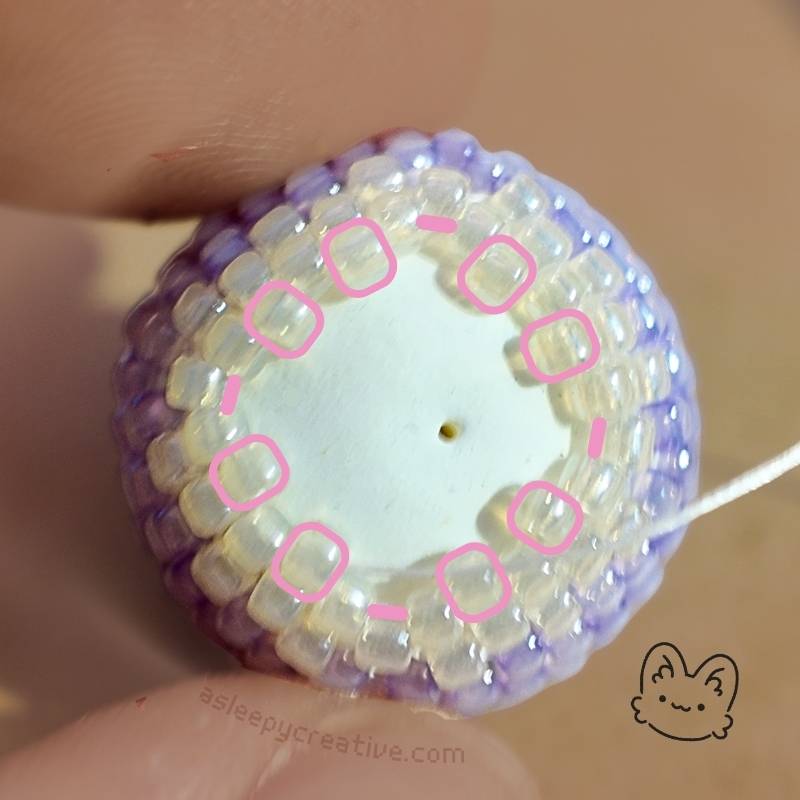
Row 22
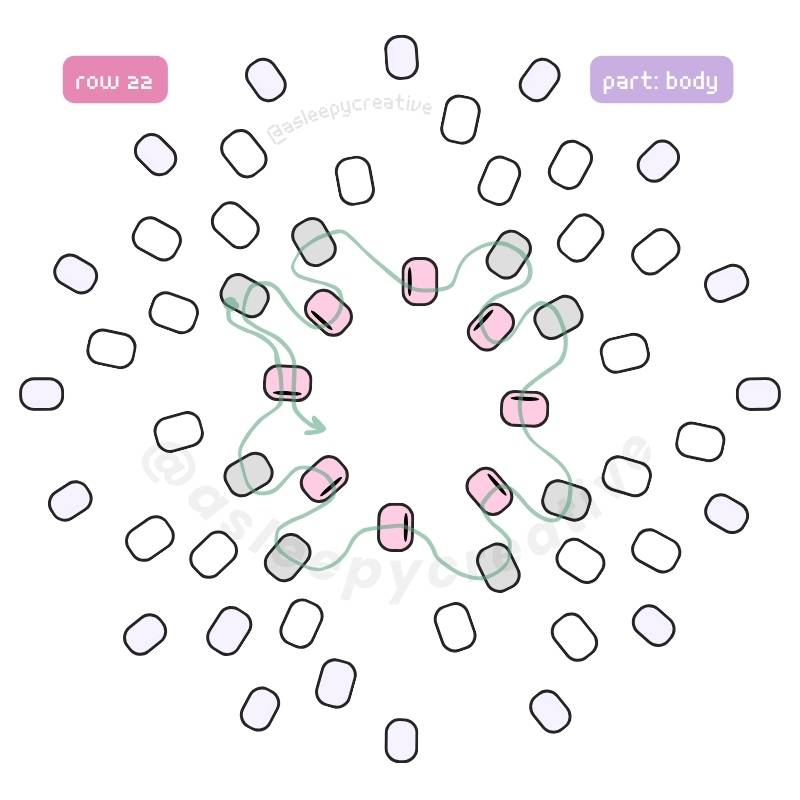
Row 22: just a straightforward peyote round. One bead in each position, all the way around. (pattern : 1 – 1 – 1 – 1 – 1 – 1 – 1 – 1)
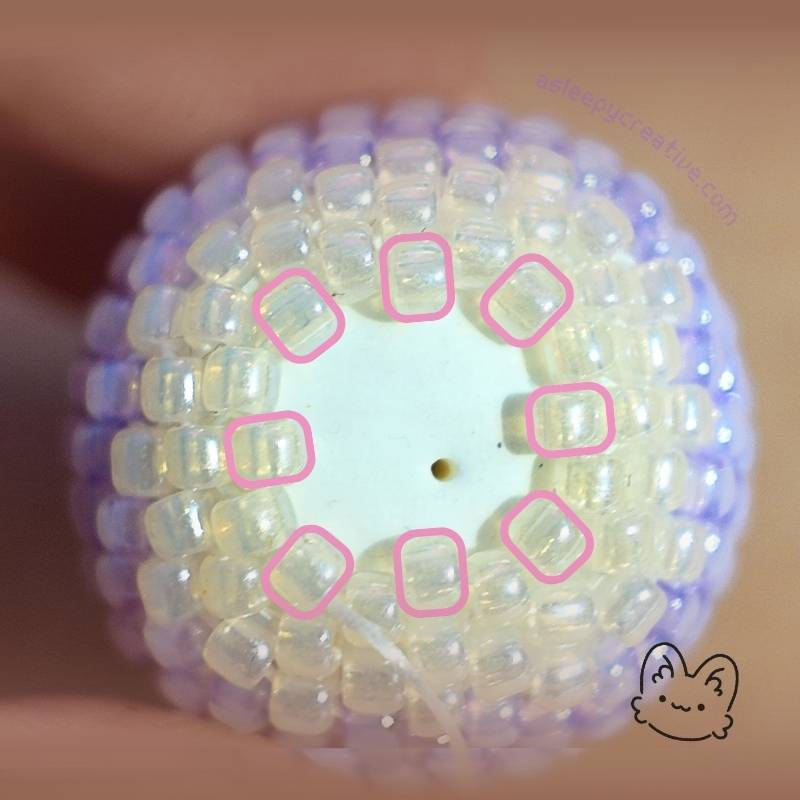
Row 23
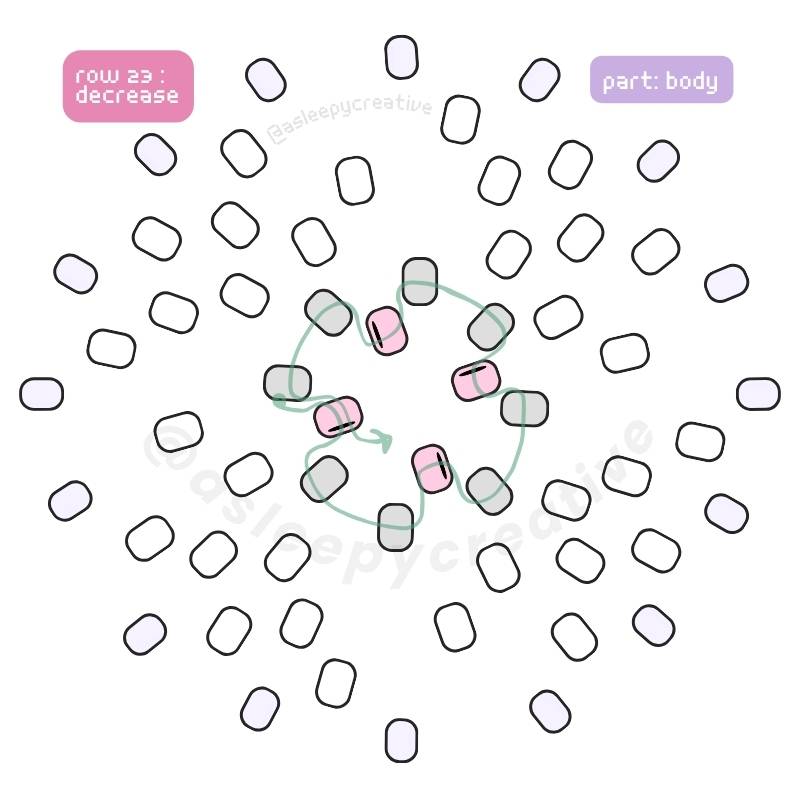
Last decrease: we’re almost done with the body of our little beaded whale! Follow the pattern 1 _ 1 _ 1 _ 1, where 1 is adding one bead, and _ is skipping (decreasing) and passing through the beads of the previous rows without adding a bead in between. 🙂
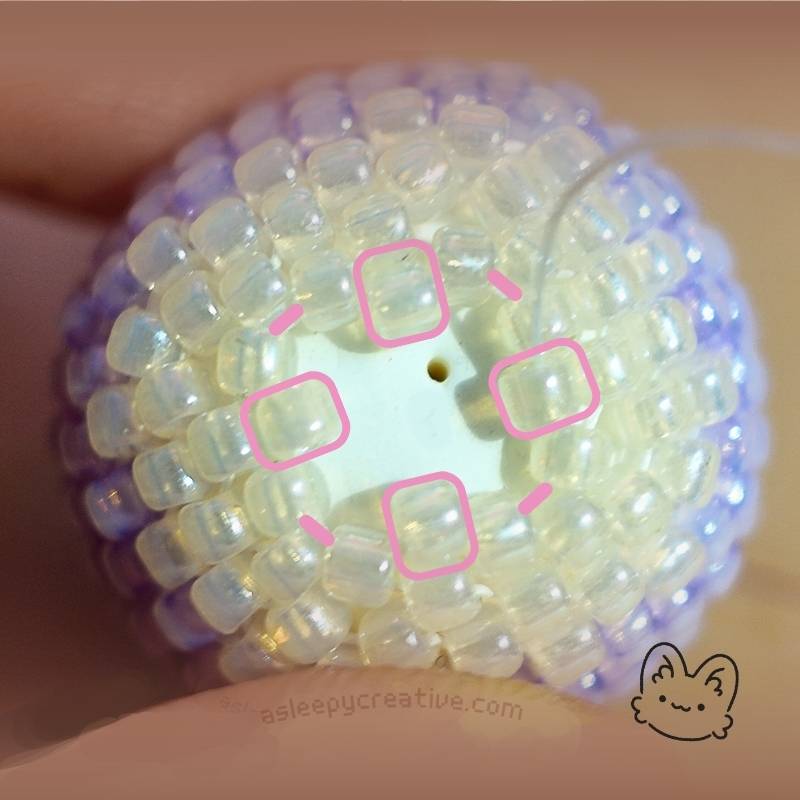
Row 24
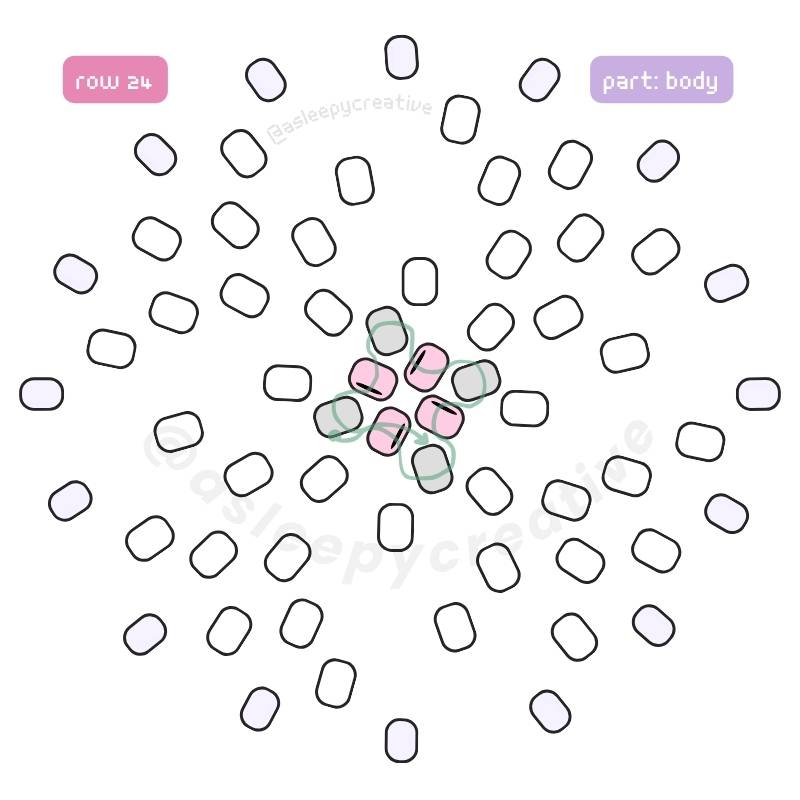
And last row to finish the body, add 1 bead in between the 4 beads added in the previous row. You’ll end up with 4 beads, and a little space in the middle!
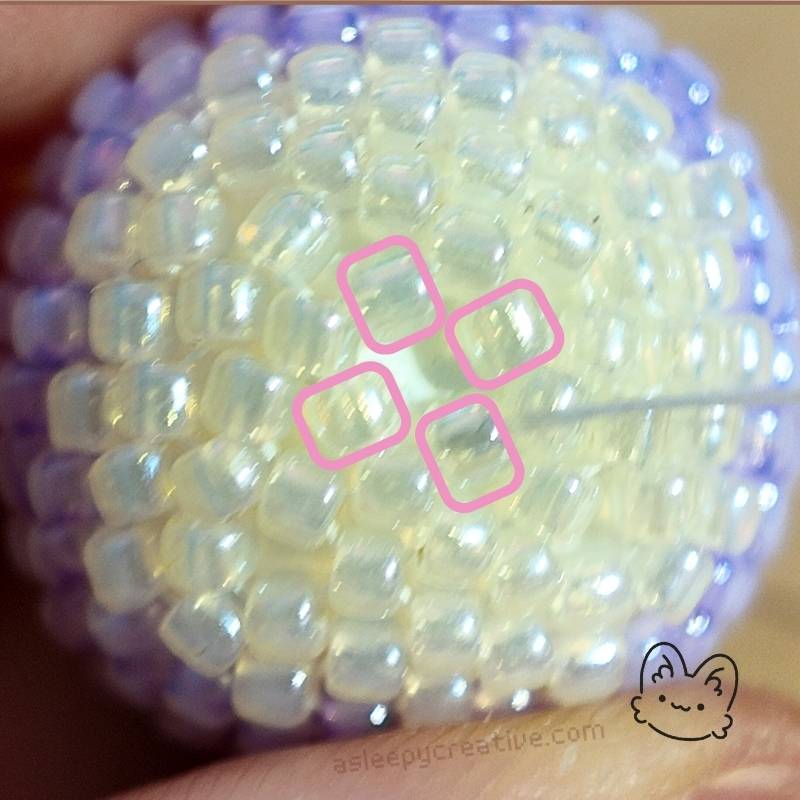
Final Body Shape
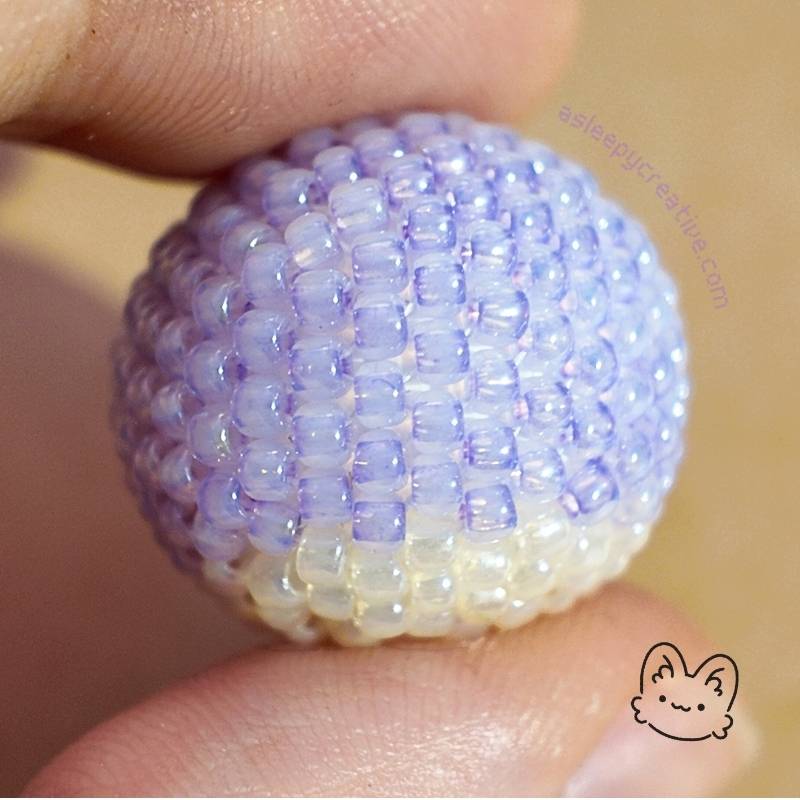
The final shape of the body is spherical, but not completely. It’s slightly flatter at the bottom, which, in my opinion, gives it a good base to make a cute chunky little whale! ♥
2. The Eyes
Now it’s time to add the eyes to your little whale, with the 2 black beads you prepared previously.
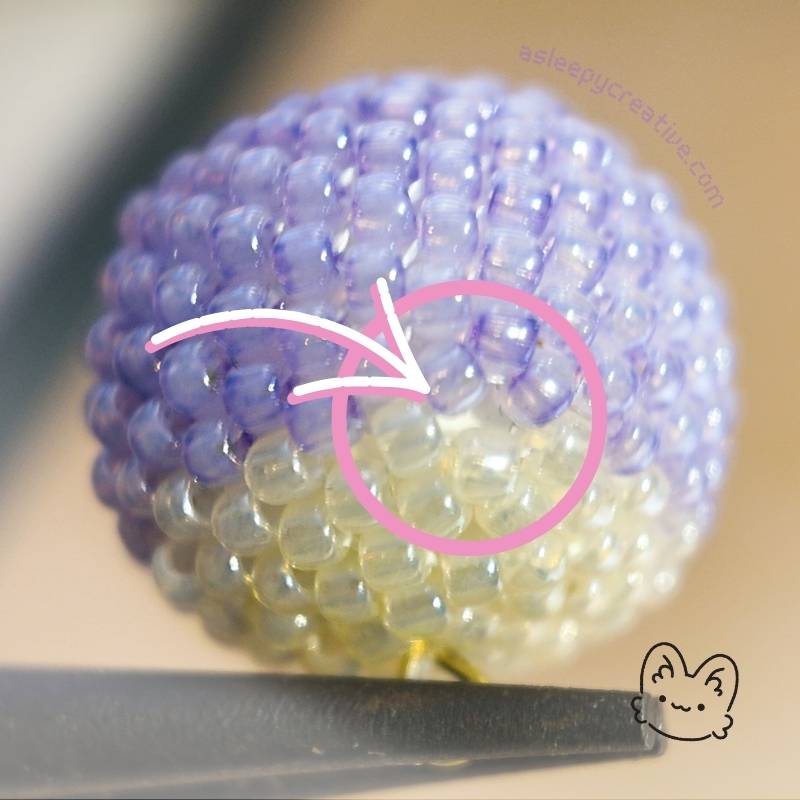
At the junction of both colors of your whale, identify these holes. They are visible when you look very carefully or from a very close distance. This is where I choose to sew my eyes.
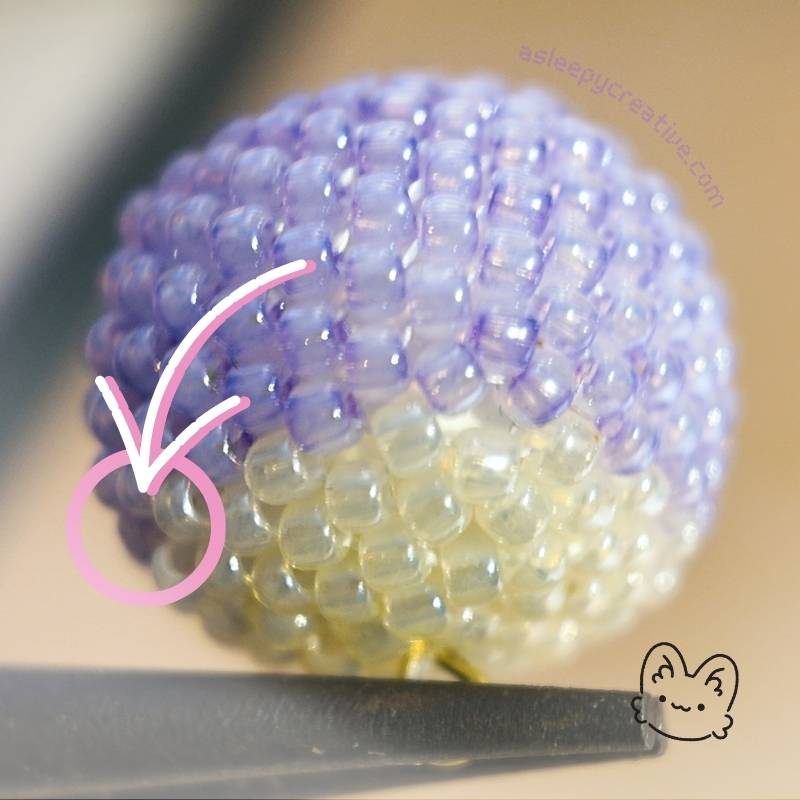
This is the second spot. I’ll sew one eye on each spot.
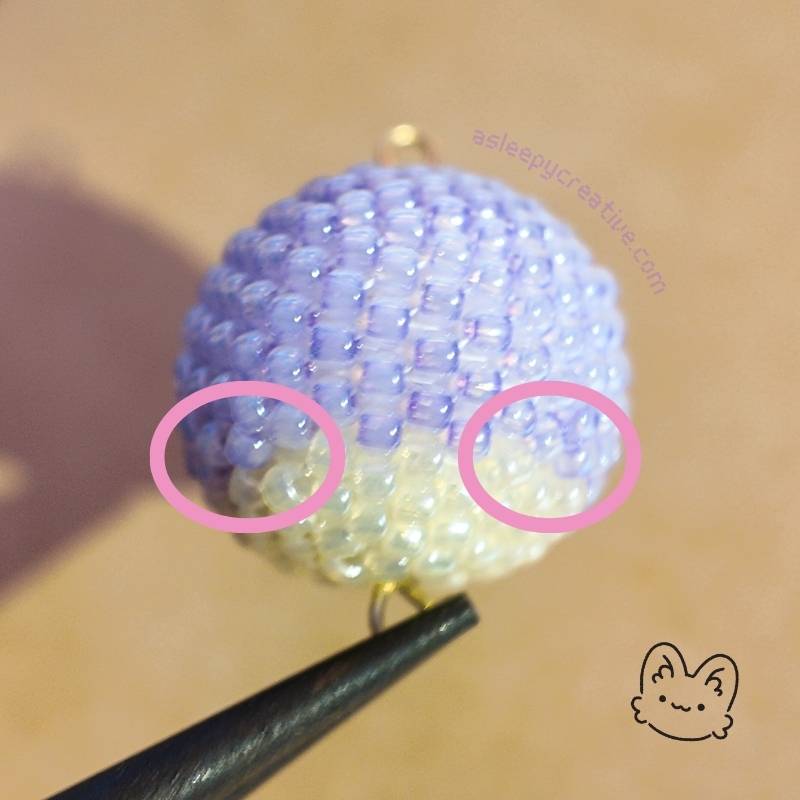
This is how it looks from the front. You can choose to sew your eyes wherever you want actually, and it depends on the look you want to give to your whale. The angle of the beads and their position will change the overall look and vibe of your whale. I decided to go for a sleepy look, with the eyes angled down (after all, i’m a sleepy creative)
The attachment goes as follows:
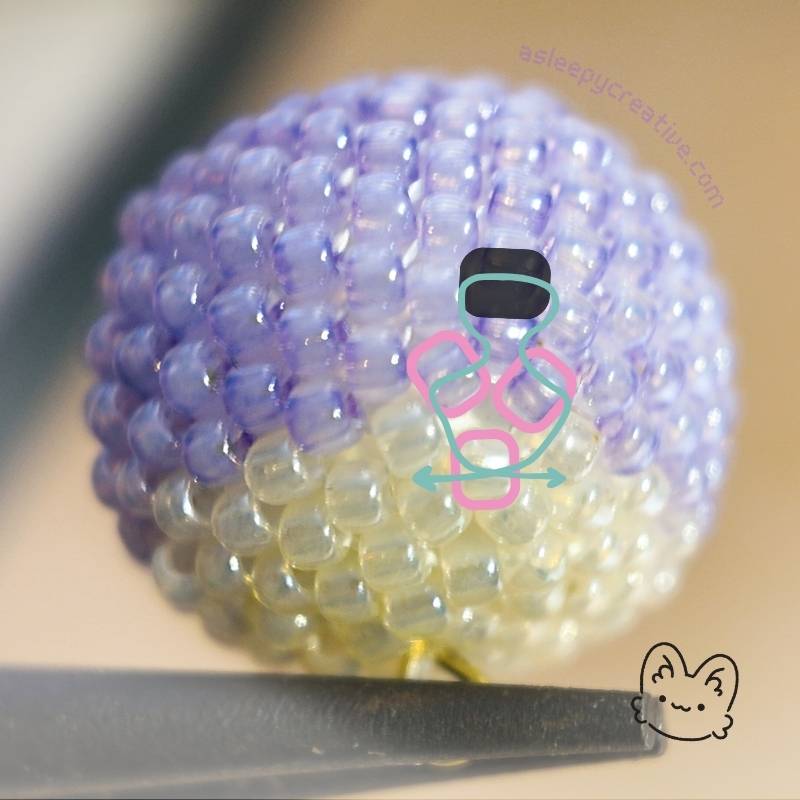
Identify the beads surrounding the area, and thread your way through the beads as annoted on the picture.
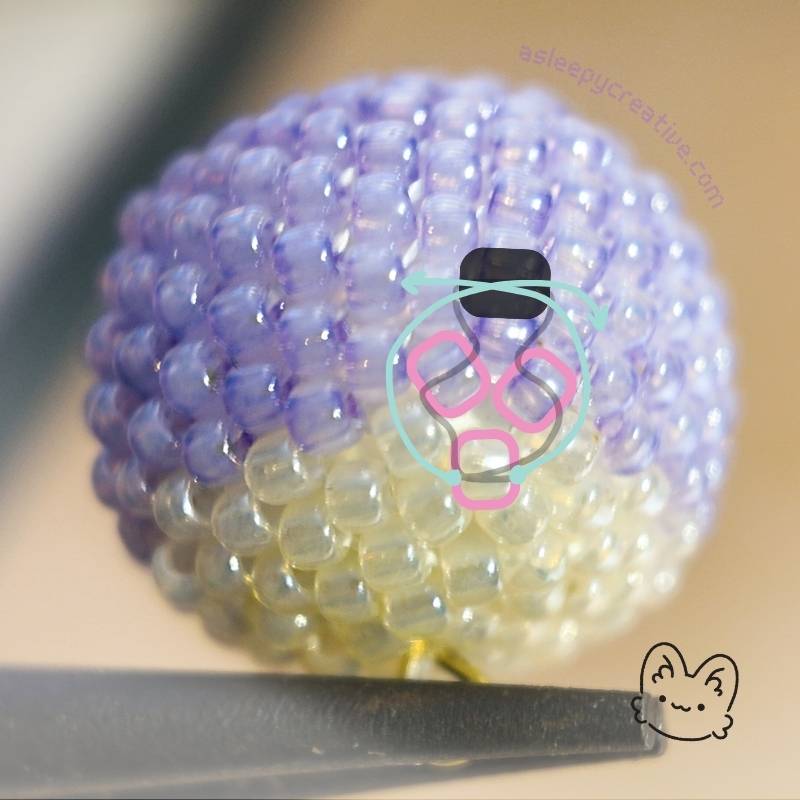
To secure the eye in place, you can pass through it again from there. The more times you pass through the eye, the more secure it’ll feel, but your thread will be more visible.
The way you choose the angle of the eye depend on which bead you go through. I wanted downturned eyes, so I passed through the bottom bead. But you can have different results by weaving through the top bead, or by positioning the eyes somewhere else:
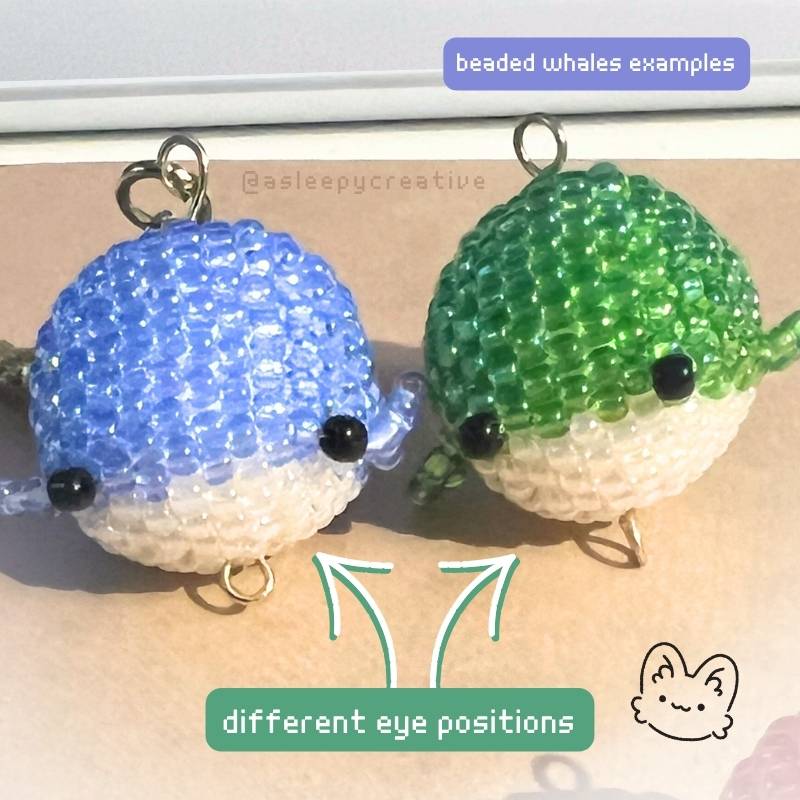
You can see how different eye positions affect the whole vibe of the whale! The green one doesn’t follow the exact pattern I’ve described in the article, as it was my first whale. It follows the perfect sphere pattern, which I realized wasn’t the perfect shape for a cute whale. But you can still see how the eyes can be positioned!
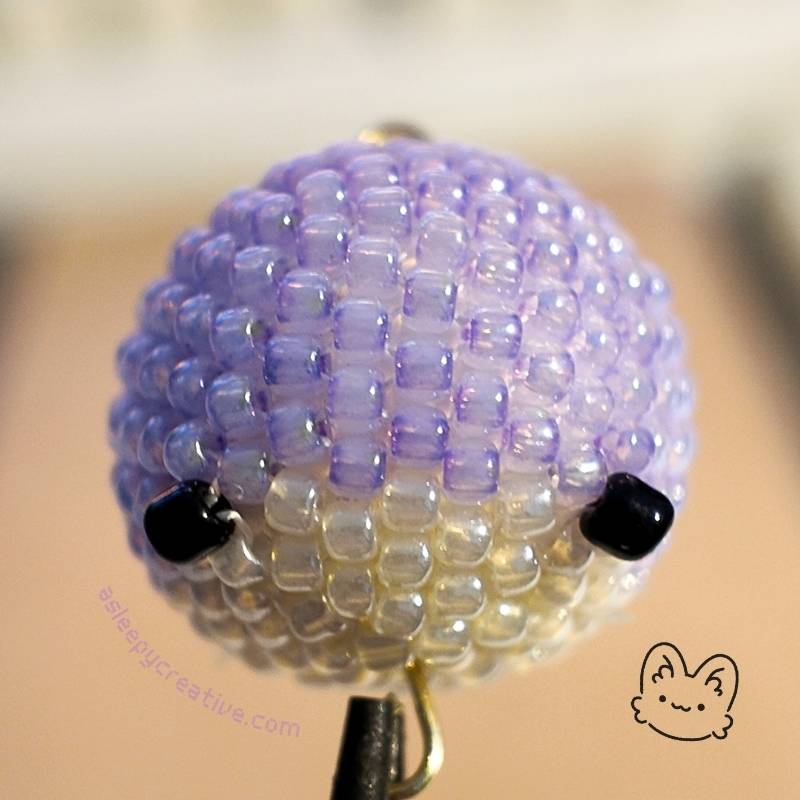
Anyway, here’s the result once the eyes are secured. I ended up coloring the string inside the black beads with a black marker so it becomes barely visible.
Now time to create the remaining parts of the whale!
3. The Fins
For the fins, you’ll need a total of 6 beads of the first color and 2 times 11 inches thread (30cm). You can make both fins at the same time or one after the other, it’s your choice. Let’s start!
Row 1
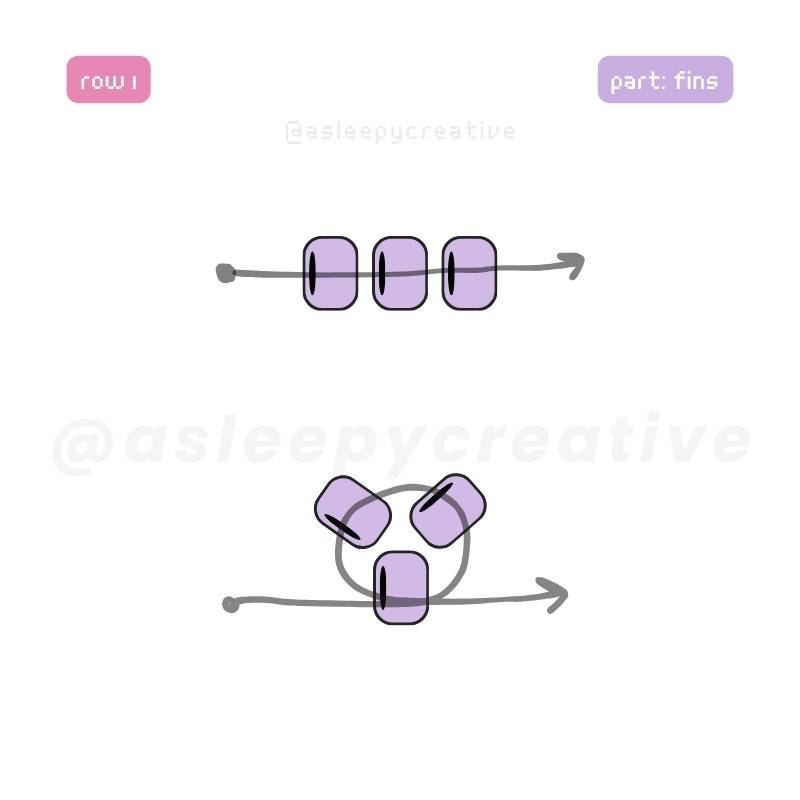
Put 3 beads on your thread, then pass your thread once again through the first bead added to form a little triangle.
Row 2
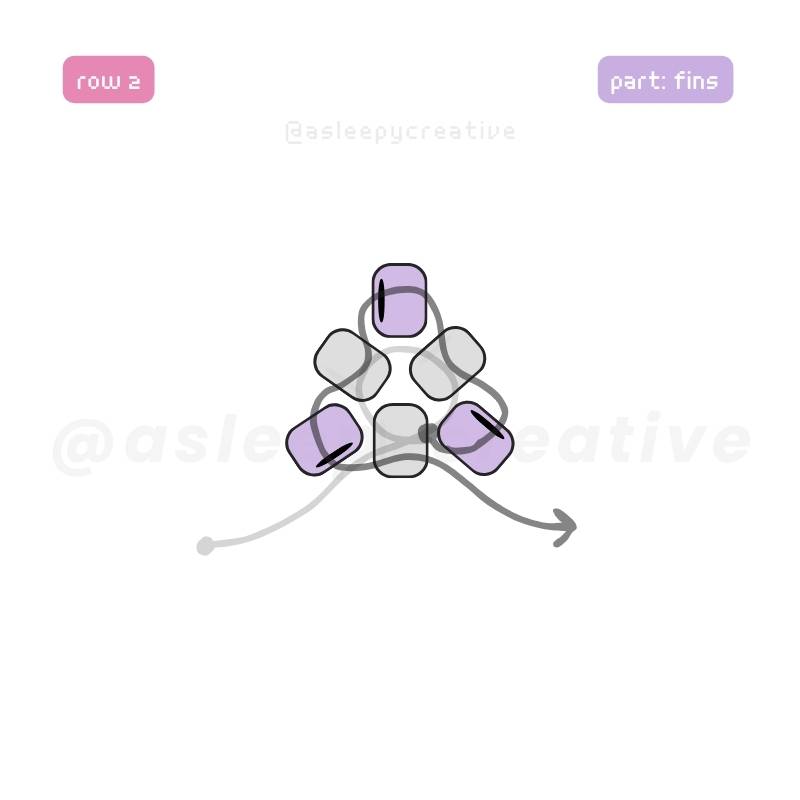
From there, make one round of peyote stitch by adding one bead in between each bead of the 1st row. This will create a larger triangle: that’s your fin! Make sure to slide the triangle around the center of the thread, as we will weave it to secure it on to the body.
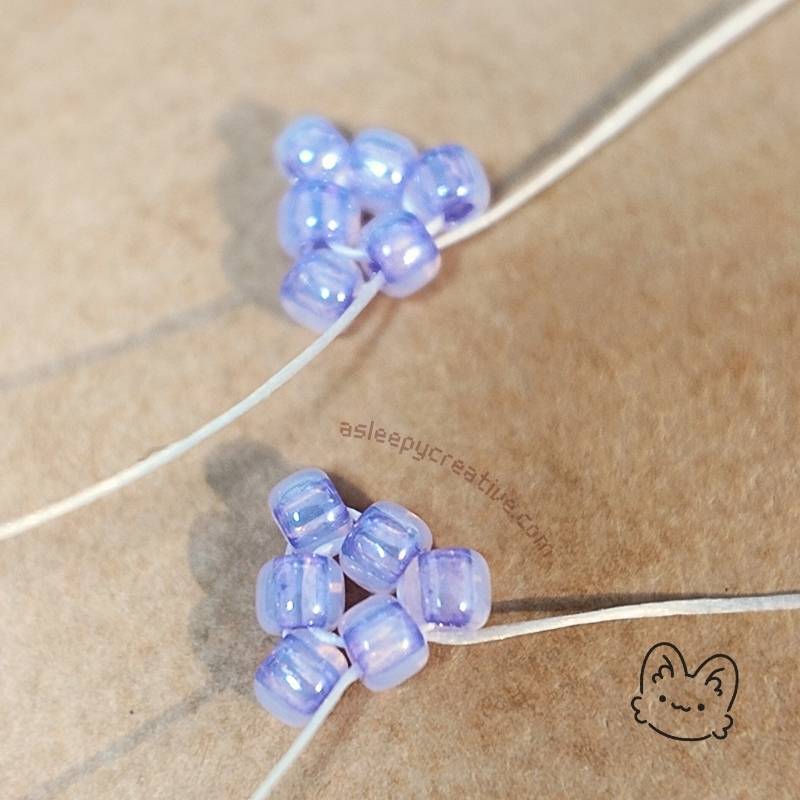
Both fins are ready to be secured!
Attaching Fins to Body
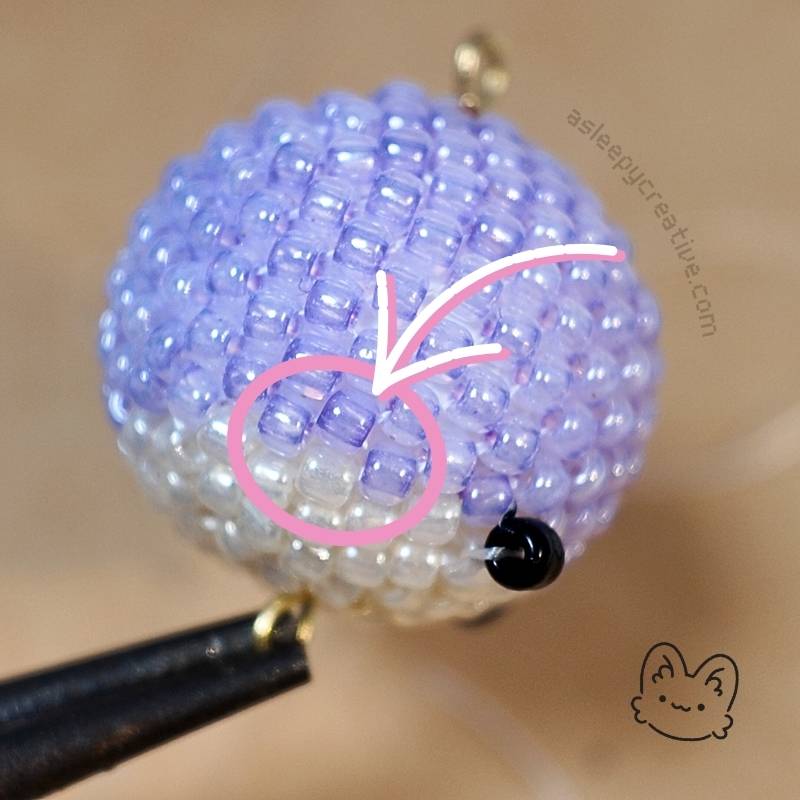
Here is the position I’ve chosen to secure the fins. On the left of the eye, you can identify 3 beads forming a little triangle. Then, we have the diamond shape that we will sew the fin onto.
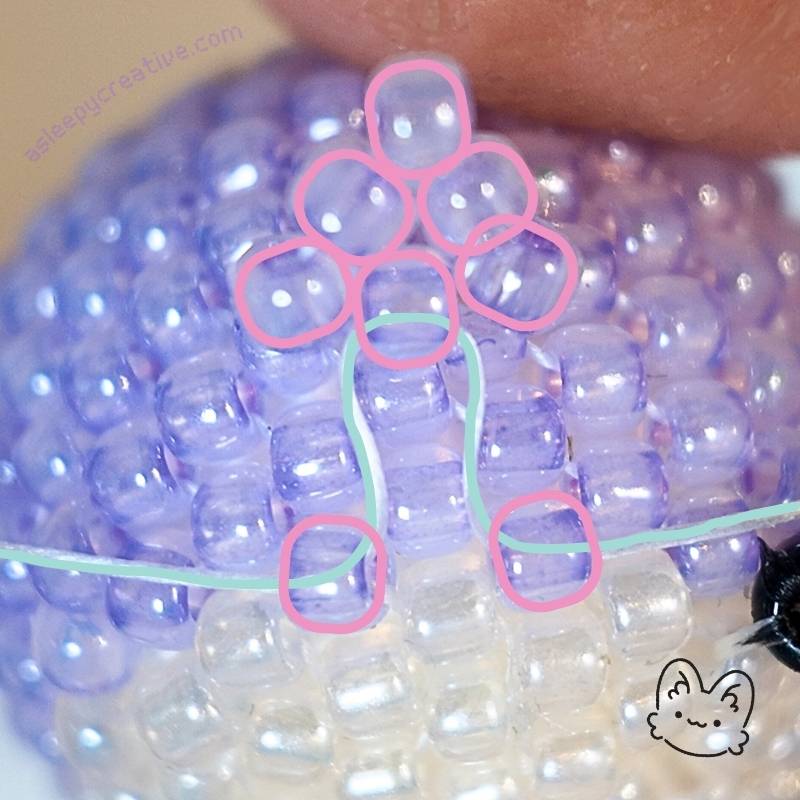
Take your fin, and weave it through both beads as shown on the picture. You need to pass both end of the thread separately, and will work in symmetry to make sure the fin doesn’t end up wanky.
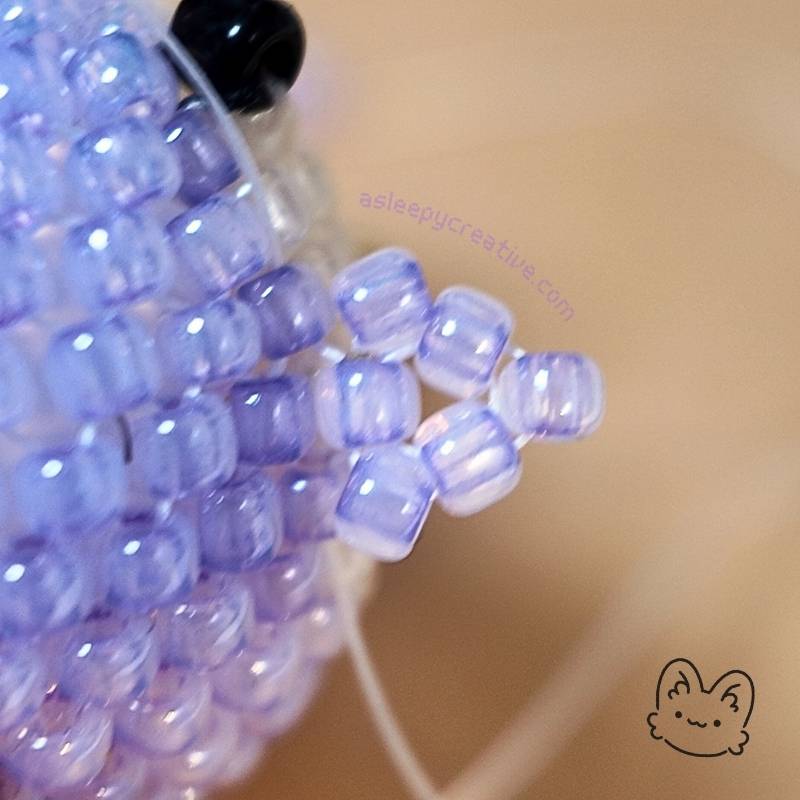
Once you’ve done that, it should look like this from the top.
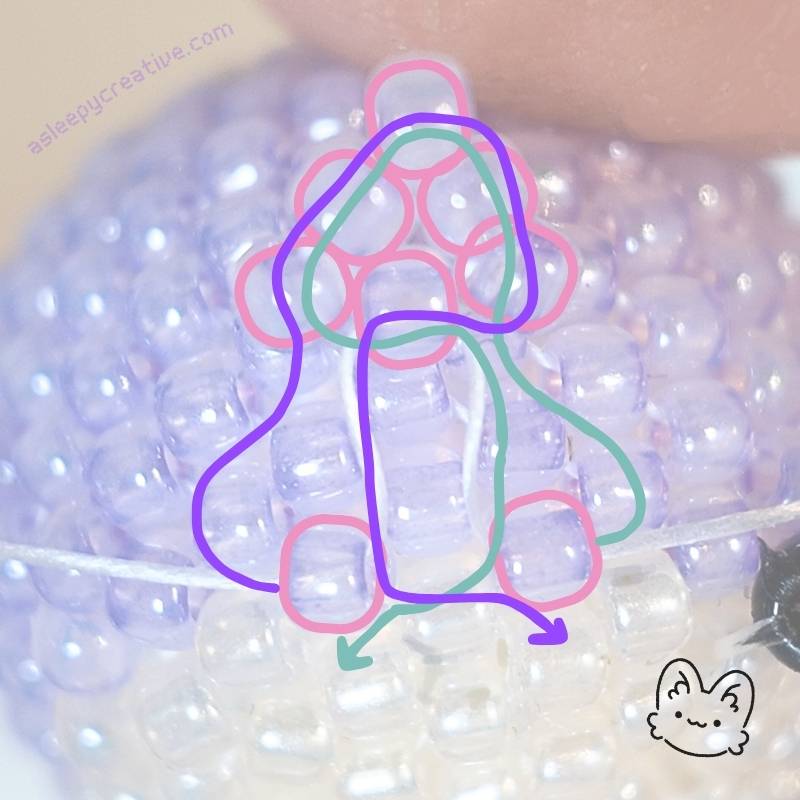
It’s now time to secure it further. The green line represents the right end of the thread, and the purple one represents the left side. Pass your thread separately through the fin as shown to secure it to the body.
You can do it multiple times if you want to have a very secure attachment. Make sure you pull tight after doing that!
You’ll then need to weave the remaining ends in the nearby beads of the whale’s body to make them 1. invisible 2. tight 🙂
And when you have remaining thread, make sure you weave it in the nearby beads going one way, then another, then another, to make sure it’s secured before cutting it.
Do this again for the other fin, and you’re done for the fins! ♥
4. The Tail
For the tail, you’ll need a total of 6 beads of the first color and 15 inches thread (40cm).
Row 1
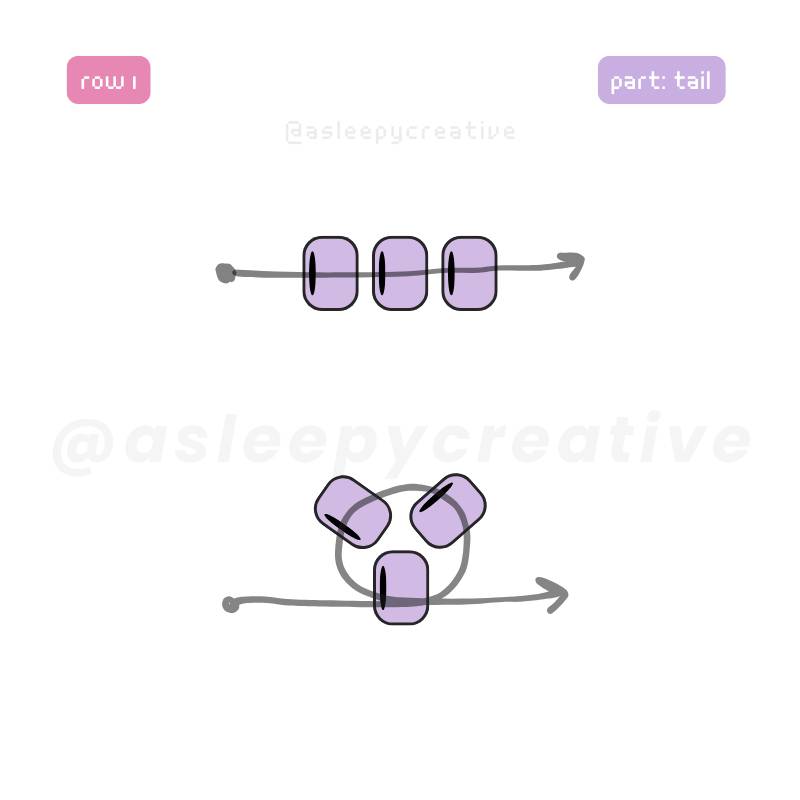
Just like what you’ve done to make the fins, pass 3 beads on your thread, then pass your needle and thread once again through the first bead added to form a little triangle. Make sure the triangle is positioned in the middle of your thread.
Row 2
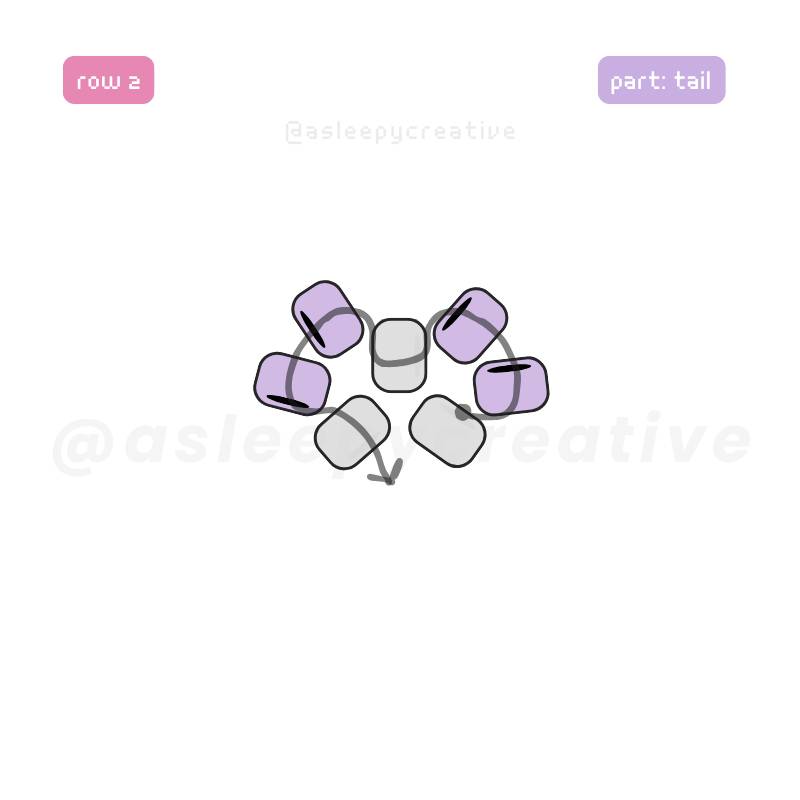
Rotate your the triangle shape you’ve created to have 2 beads at the bottom. Then, make an increase on both sides of the triangle by following the diagram.
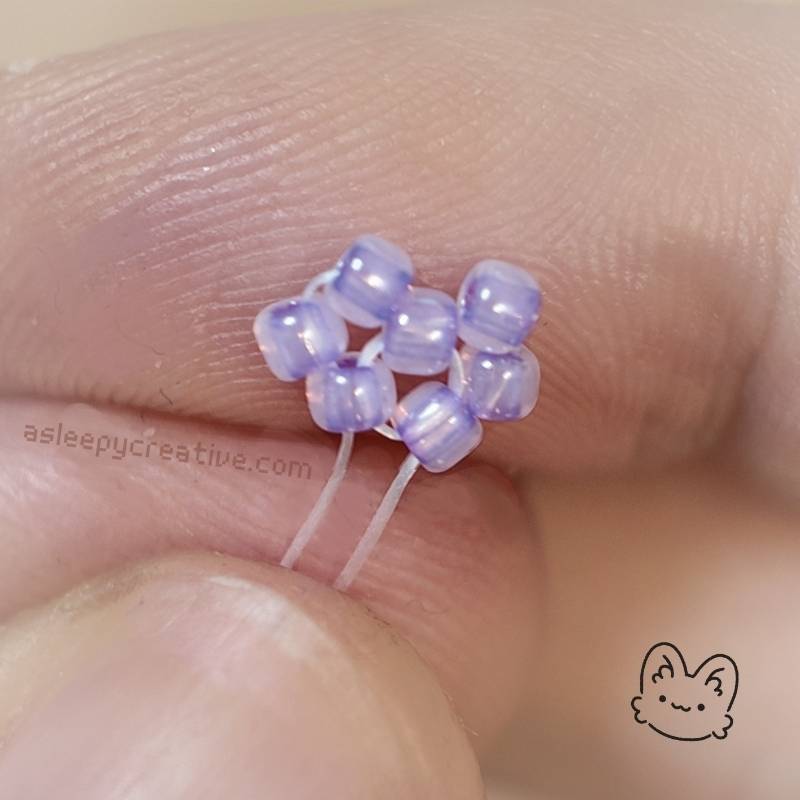
Row 3
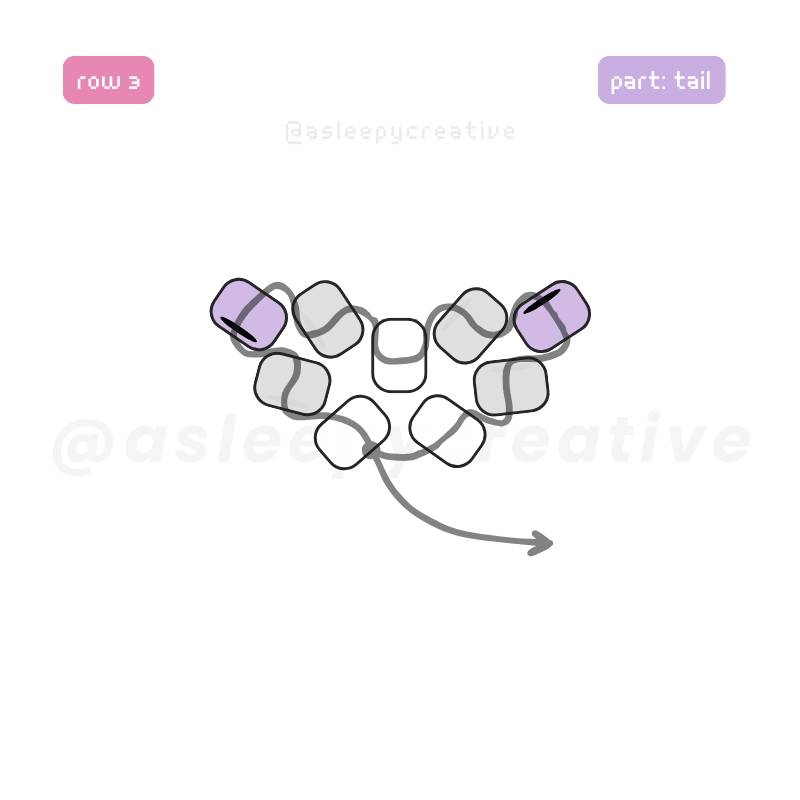
For the third and last row, add one bead on each side of the tail symmetrically, following the diagram.
Final Look
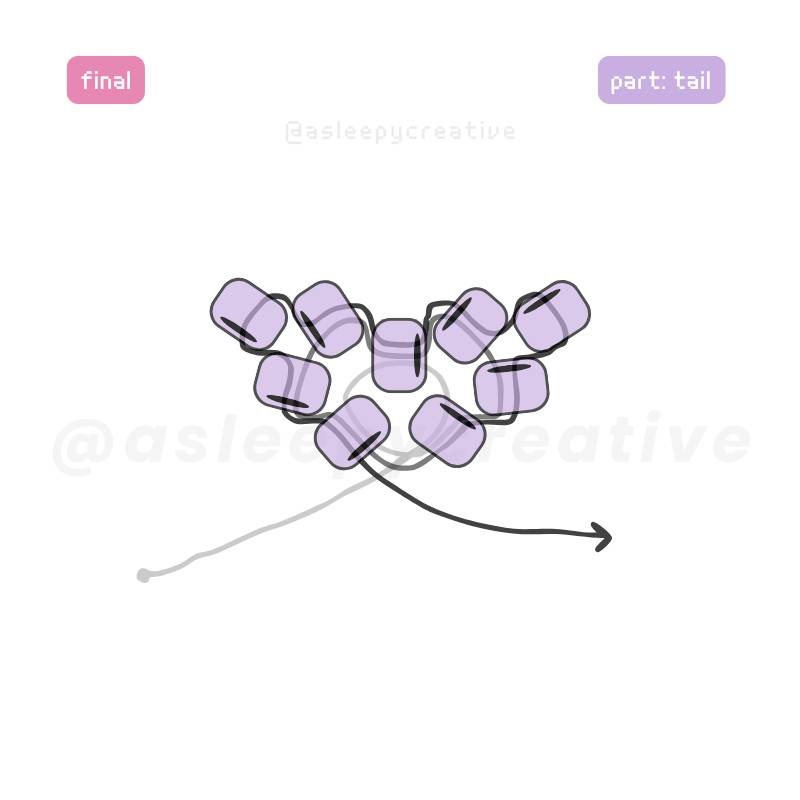
And that’s what the tail should look like! Make sure both ends of the thread are of similar length, because we’ll use them to secure the tail onto the body, just like we’ve done it for the fins.
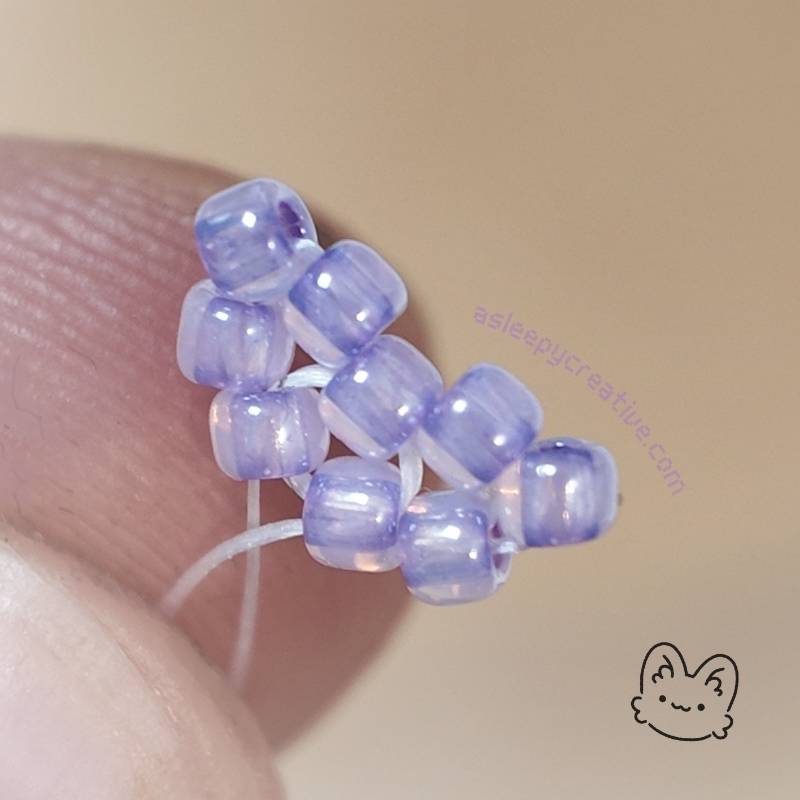
Attaching Tail to Body
It’s now time to attach the tail you’ve just made to the body and finish our whale!
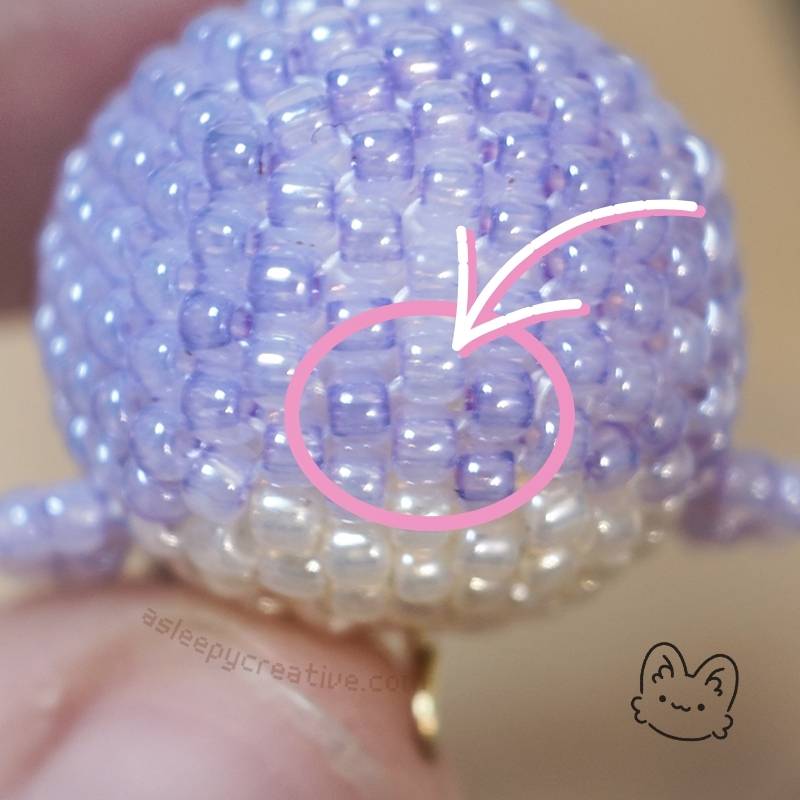
We start by identifying gthe spot we’ll secure the tail onto, at the back of the whale’s body. As previously, I marked the diamond shape created with the 4 beads circled in the pink circle.
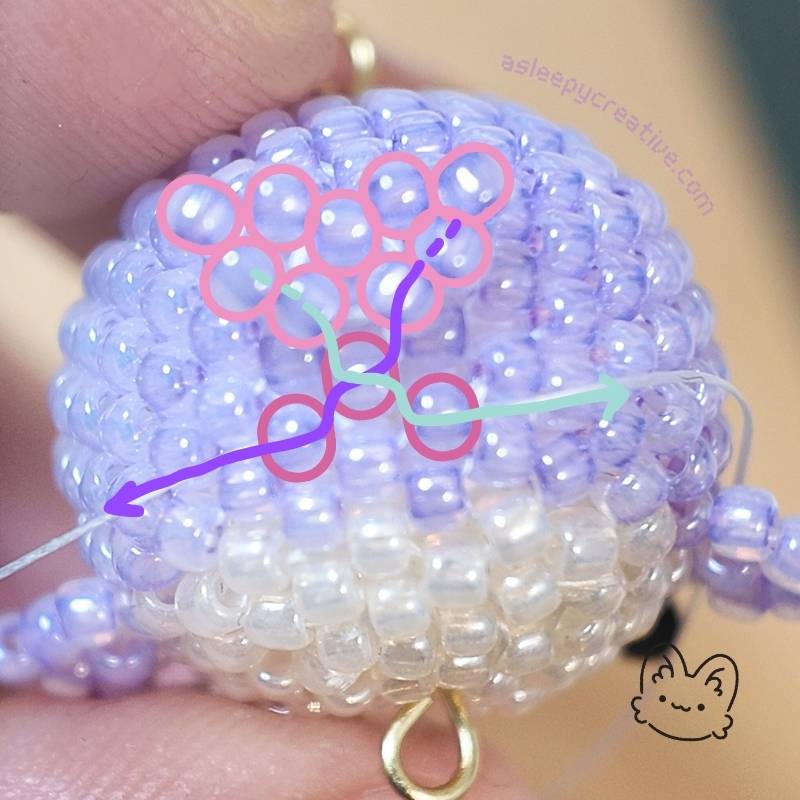
You’ll have to pass both ends of the thread symmetrically in the beads as shown on the picture. I’ve circled the tail’s beads in light pink, and the beads in which you have to pass the threads in dark pink.
The green line represents the left end of the thread, while the purple one shows the right side of it.
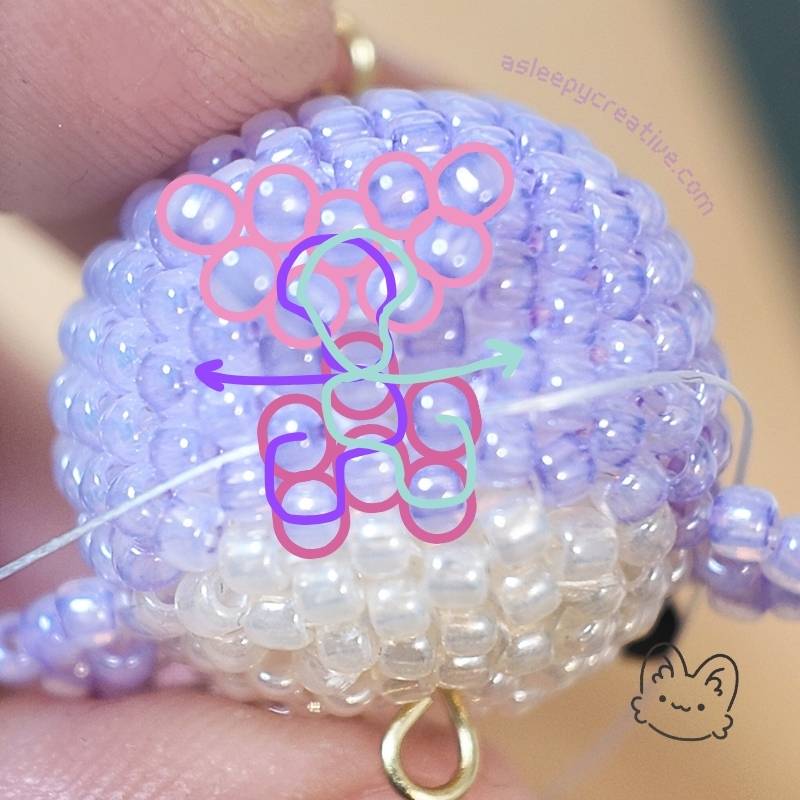
Once the first step is done, continue securing it the way shown on the picture by passing both ends in the beads circled. Once you’re done with that, pull on both ends of the thread tightly and check if the tail is secure enough for your liking.
If it isn’t, you can pass through the beads again, making sure the thread stays invisible.
And once the thread is secure enough for your liking, weave both ends in the nearby ends of the whale’s body in various pathways to make sure it won’t come lose. I weave mine through at least 10 beads before cutting the thread, just to make sure. Also, I prefer cutting the thread in the white part, so it’s even less visible. ♥
Beaded Whale: Final Look

Wrap Up
And there we have it – our very first beaded whale!
I’m not gonna lie, this project challenged me more than I expected. Getting the tension right throughout the whole body, making sure those fins were sturdy enough to not flop around, dealing with a few gaps here and there.. it all required more focus than a simple sphere. But that’s exactly what makes finishing it so satisfying. You didn’t just make a ball. You made a WHALE. a super cute whale.
The best part? Now that we’ve figured out how to modify a basic sphere shape and attach components, we’ve unlocked a whole new level of beading. This same approach works for so many other animals; just change the proportions, adjust where you attach the parts, pick different colors. My advice? Make another one. Seriously. Your second whale will be even better because you’ll know exactly where those tricky bits are.
This purple whale is like my fourth one, and all of them are slightly different. Plus, whales need friends! Keep that needle moving, and happy beading! 🐋

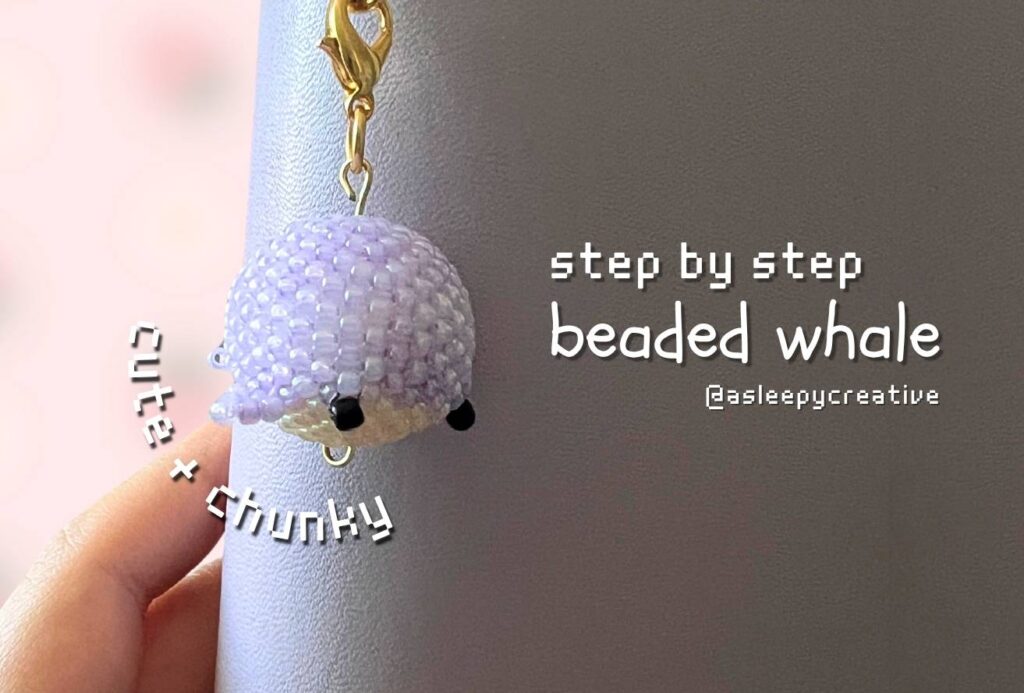
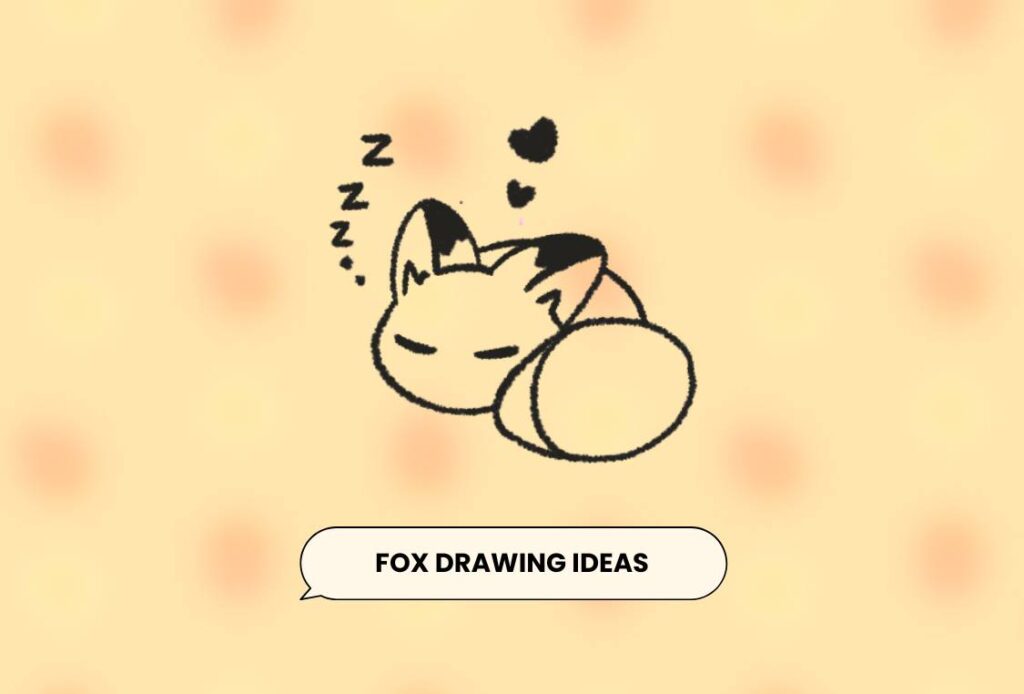
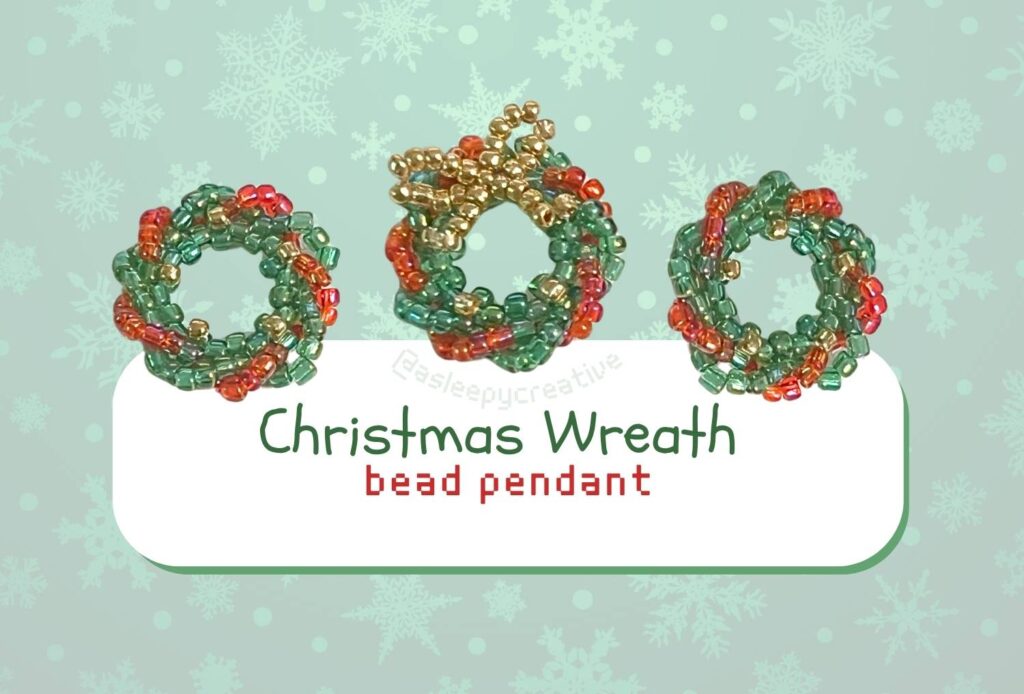
I havent tried it yet but it looks SOOOOO cute!